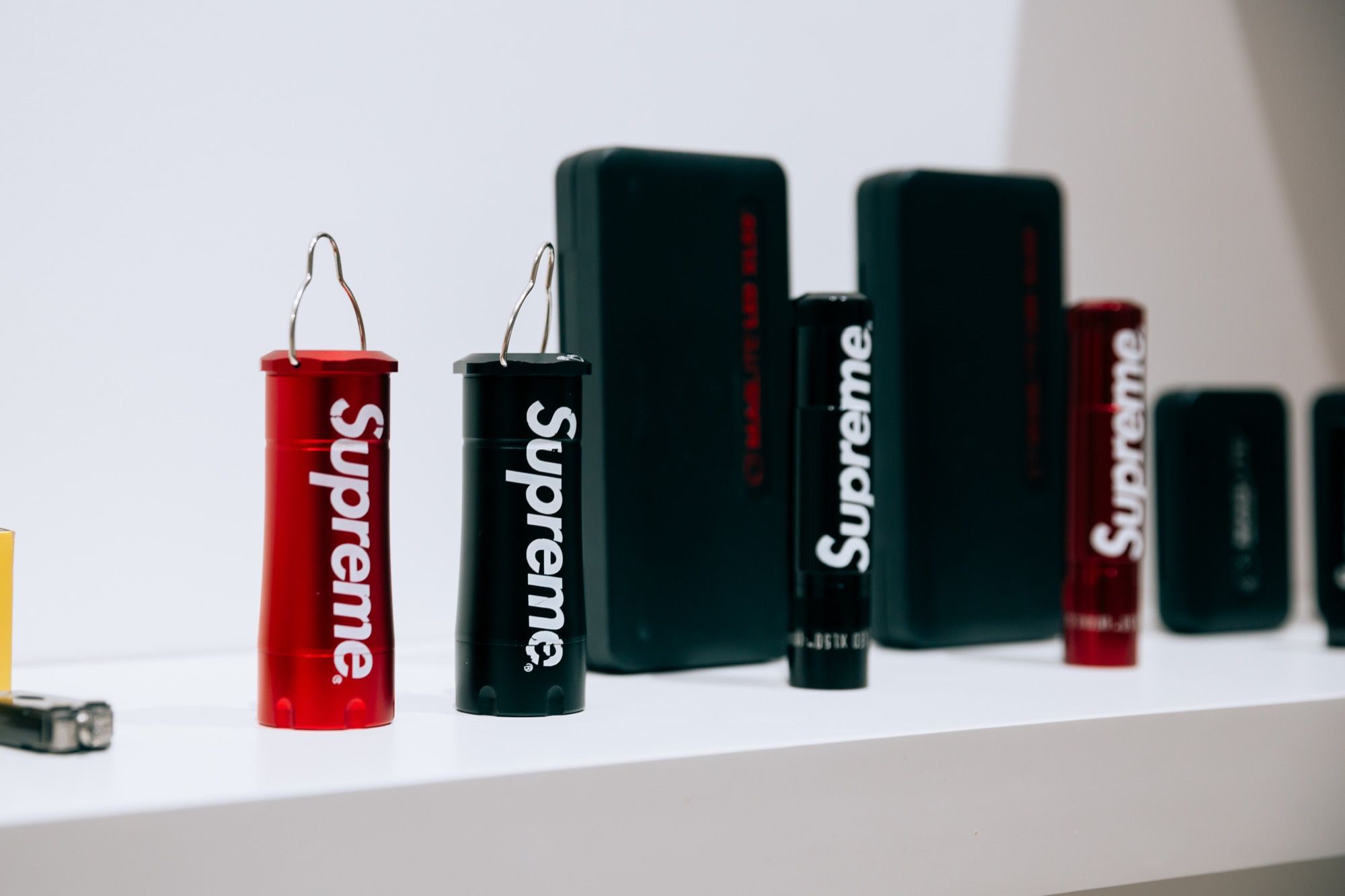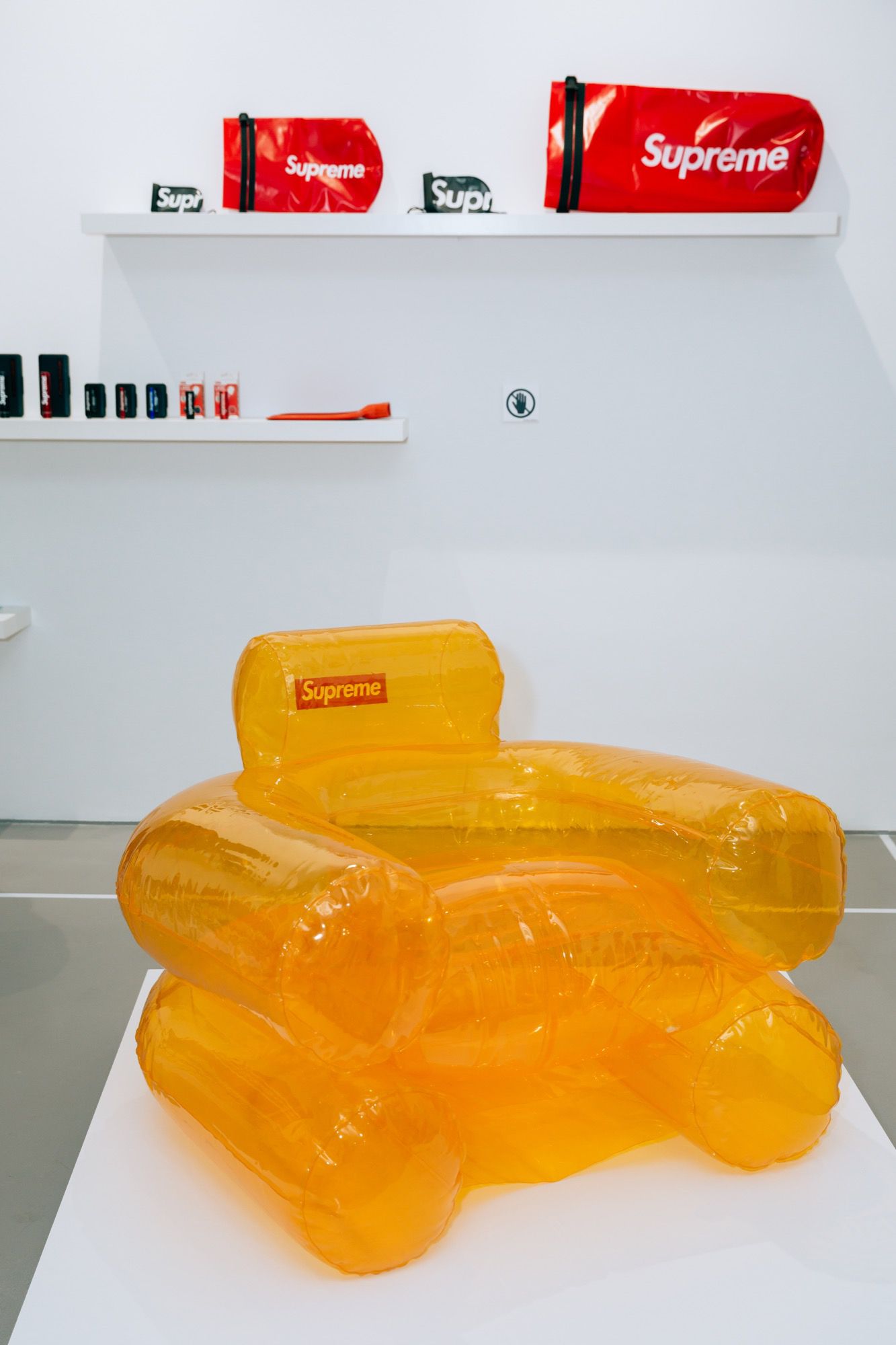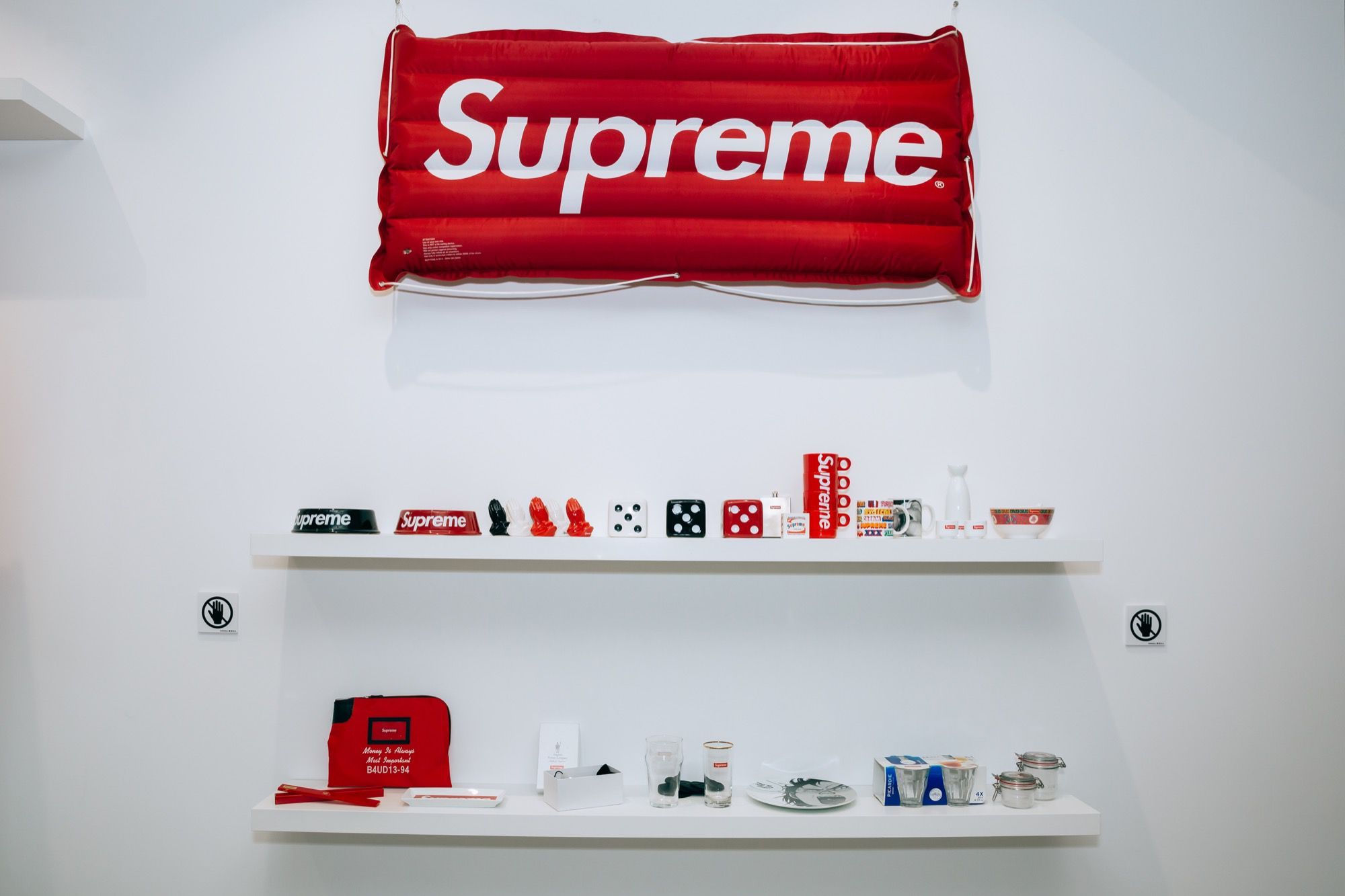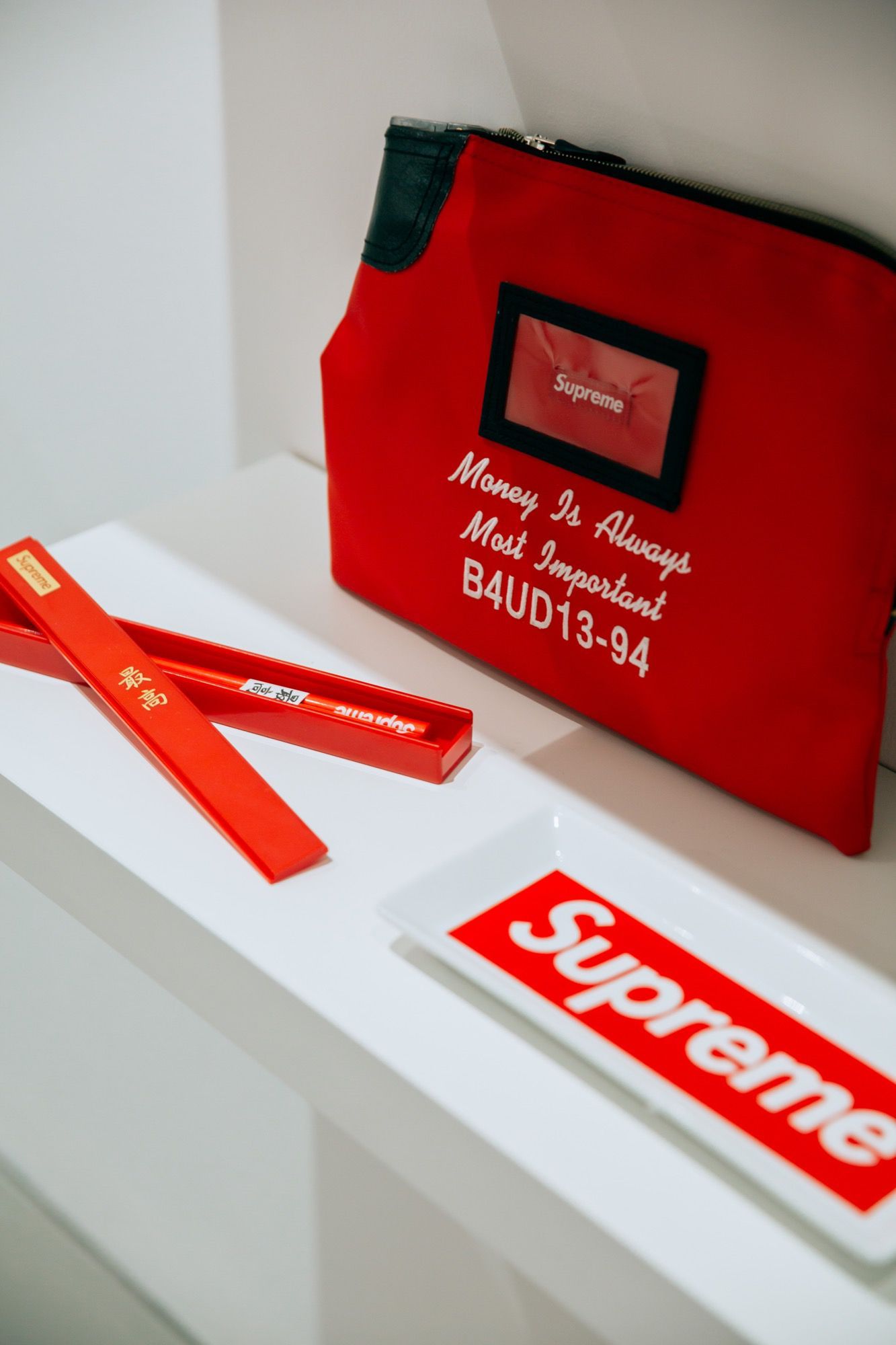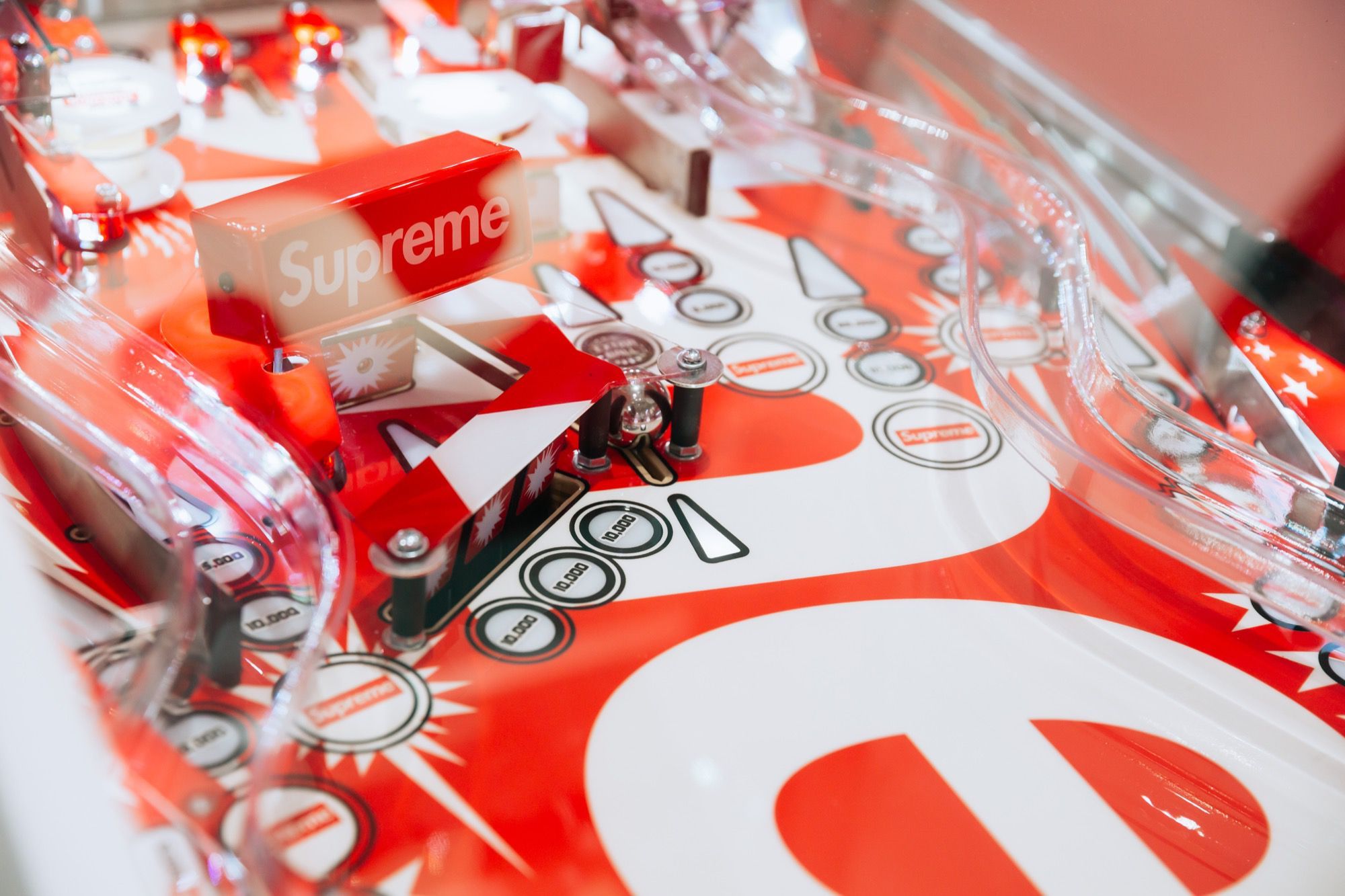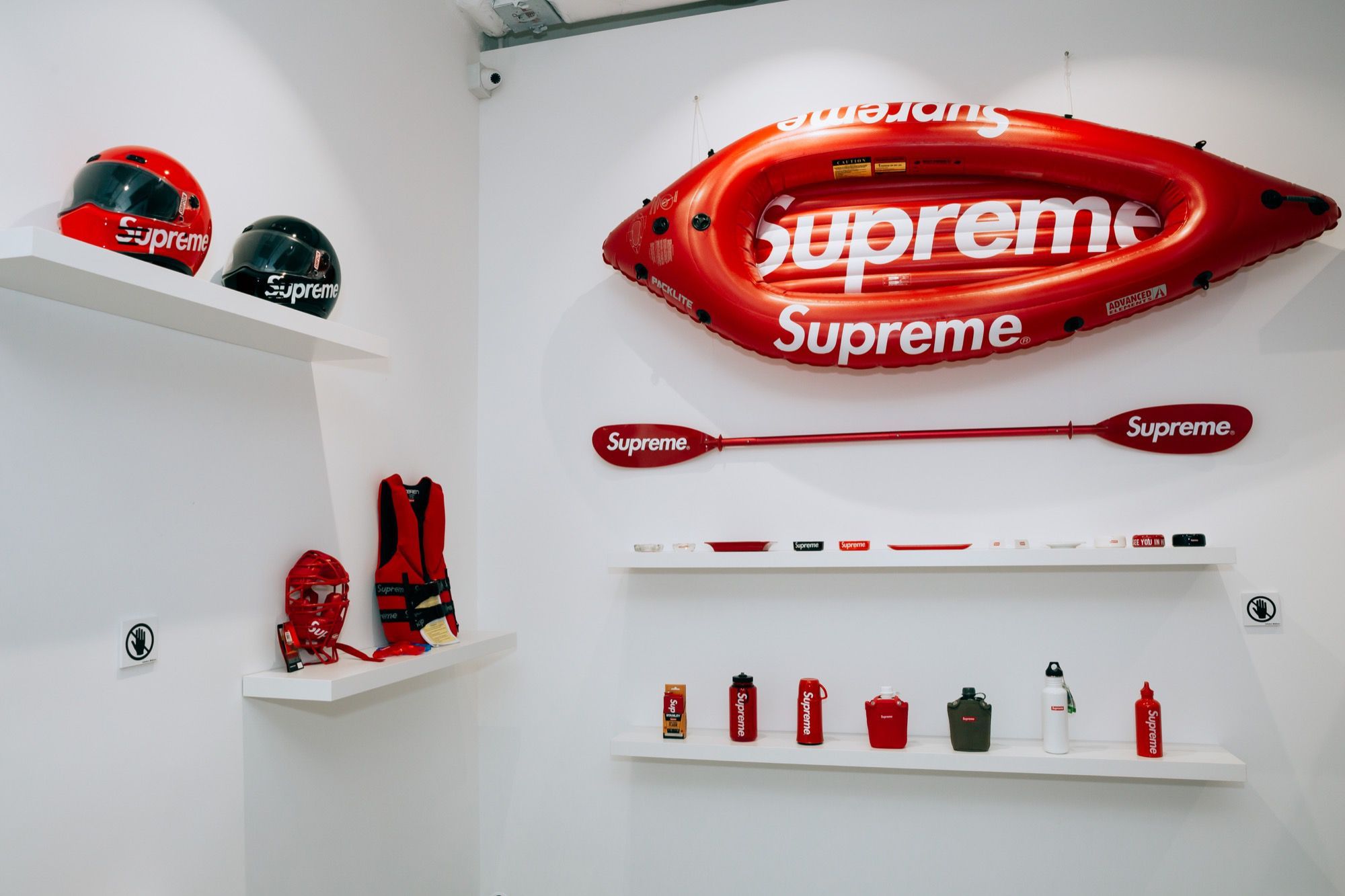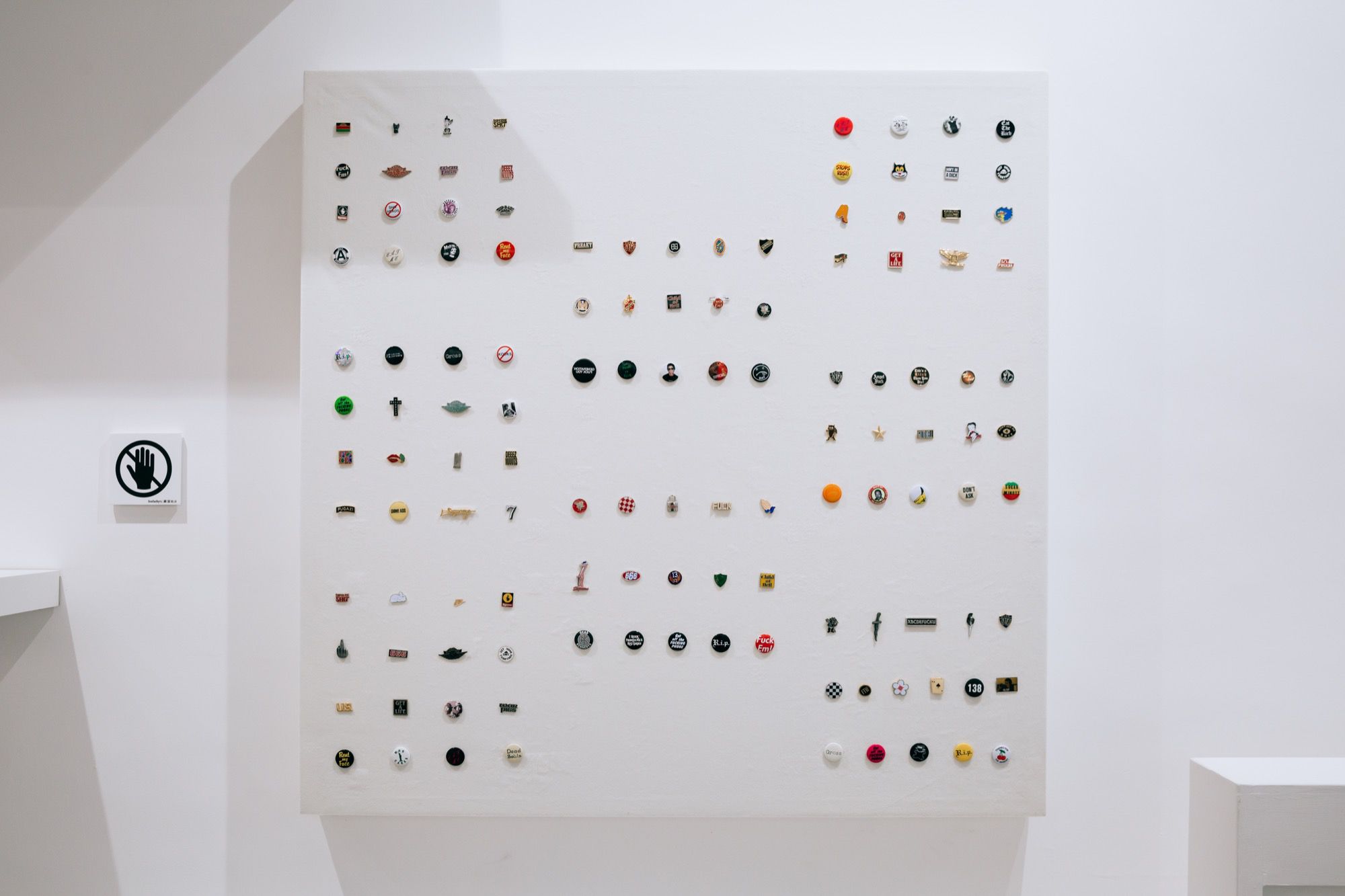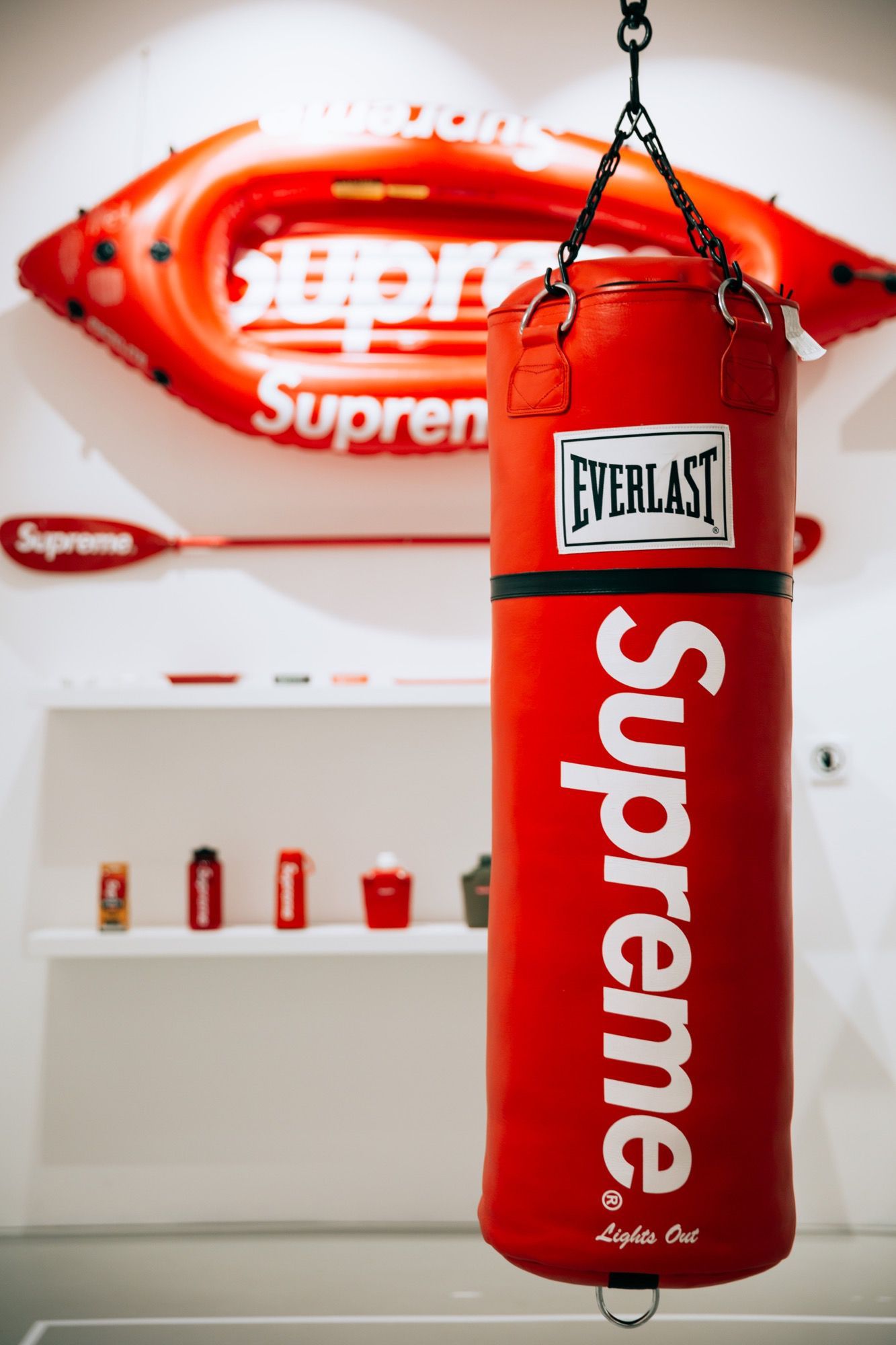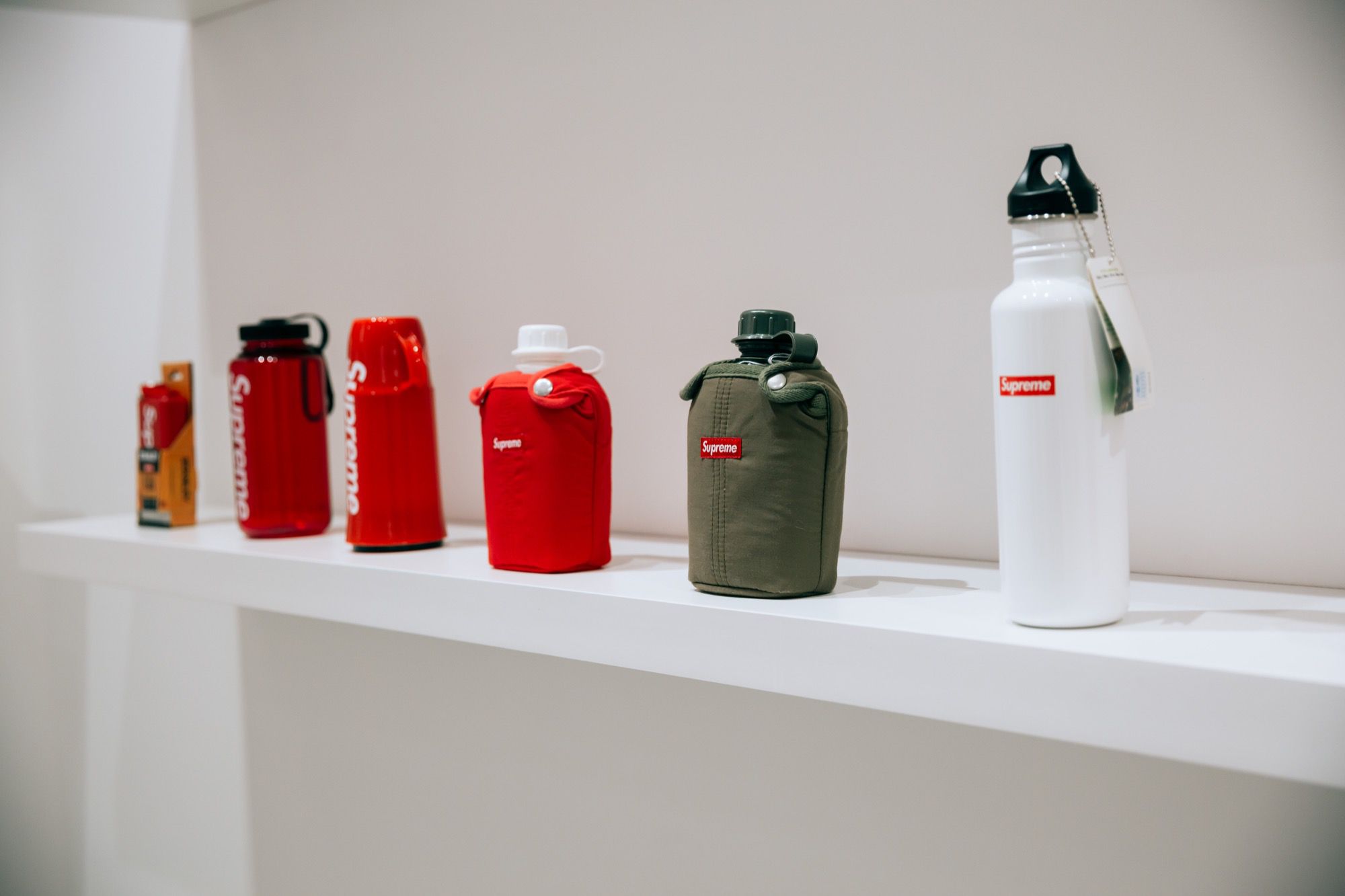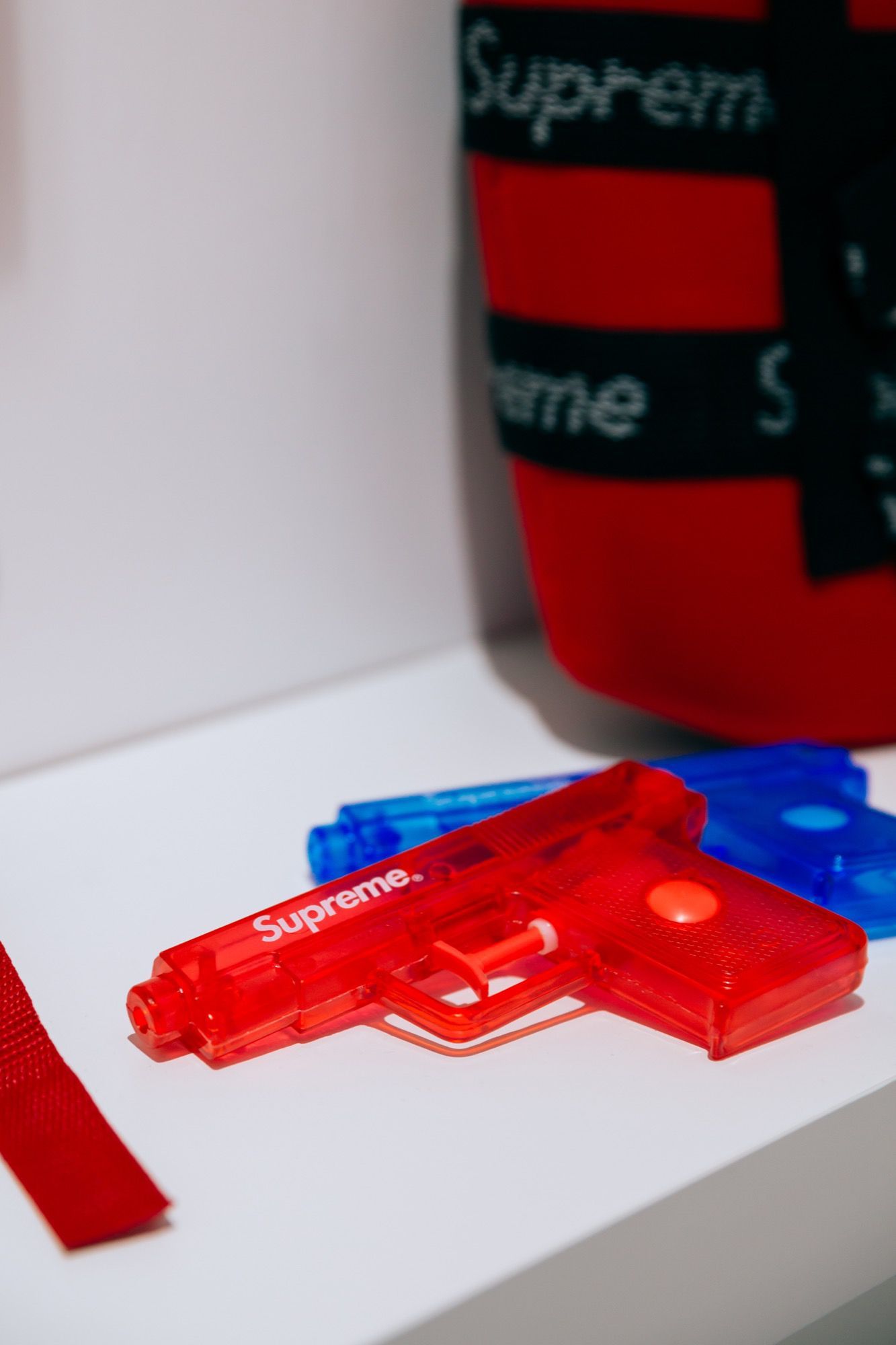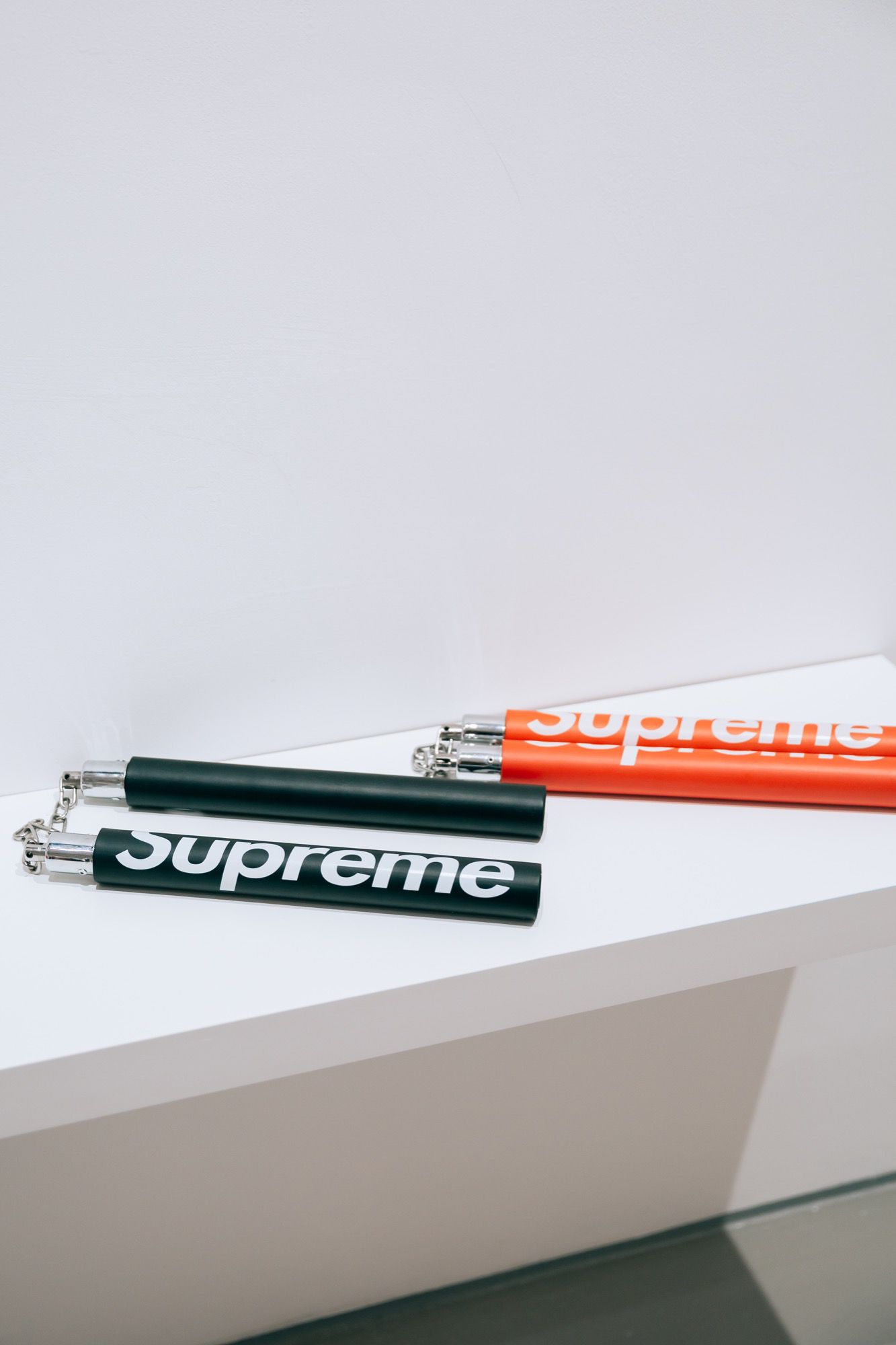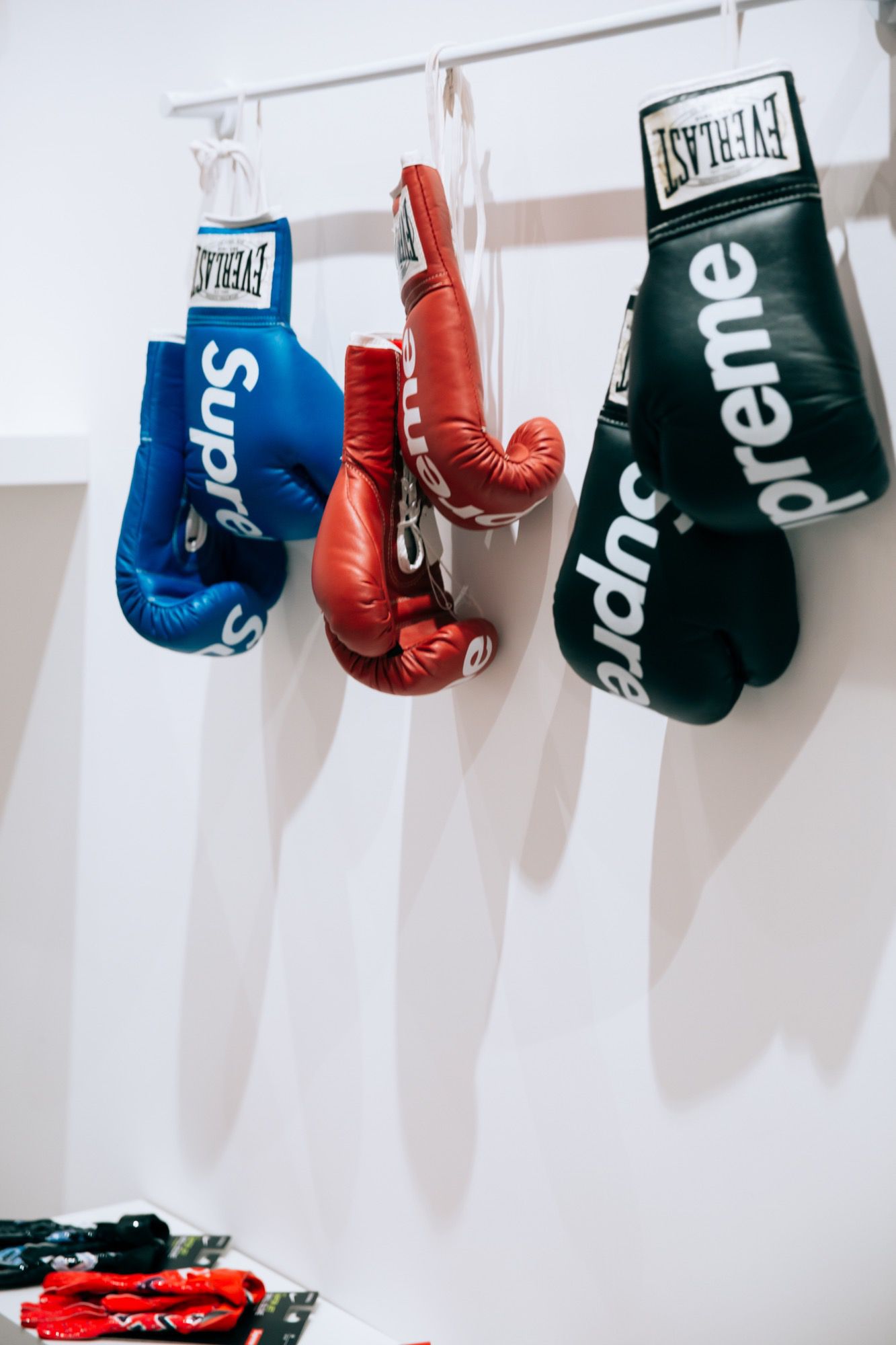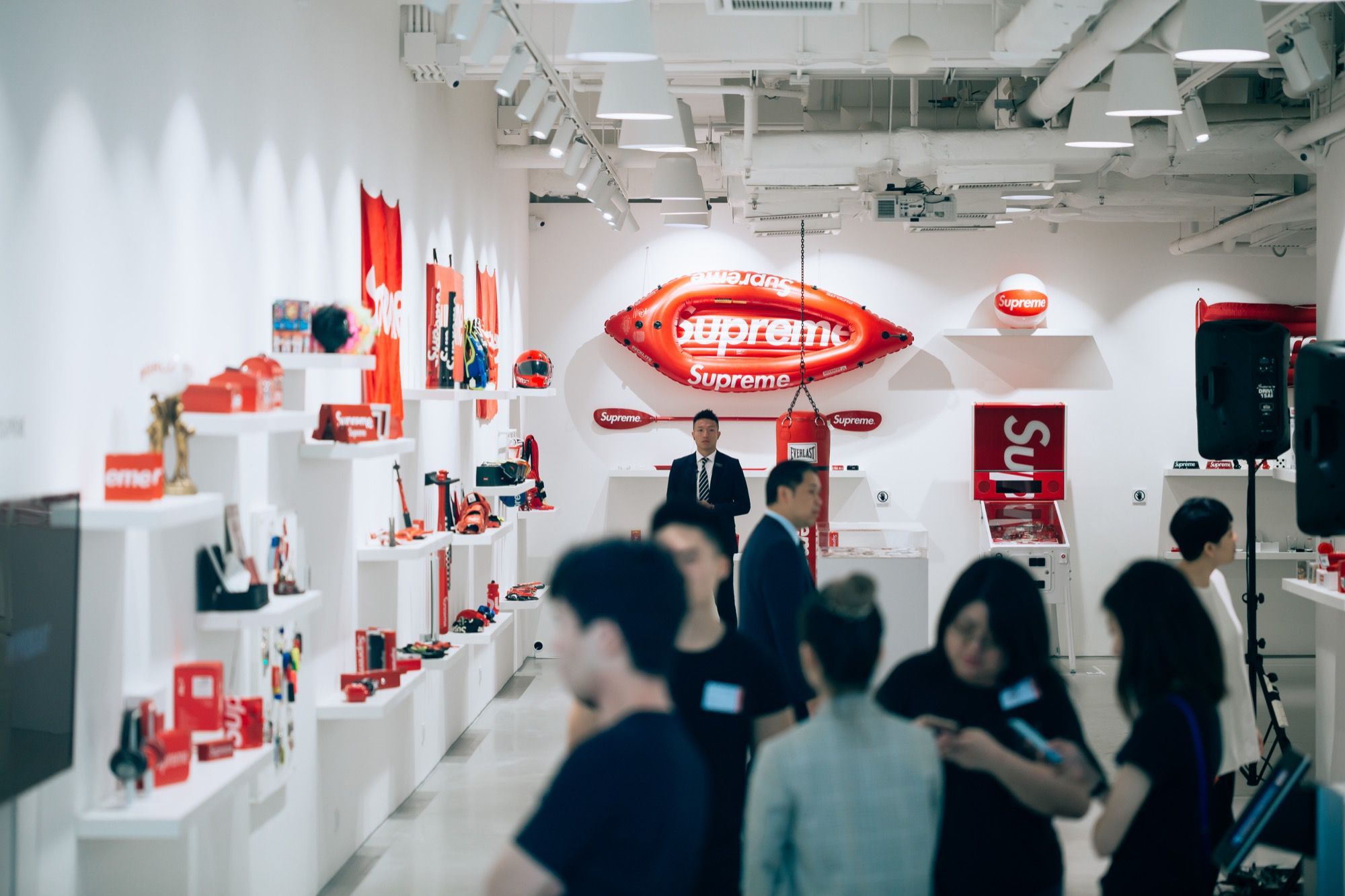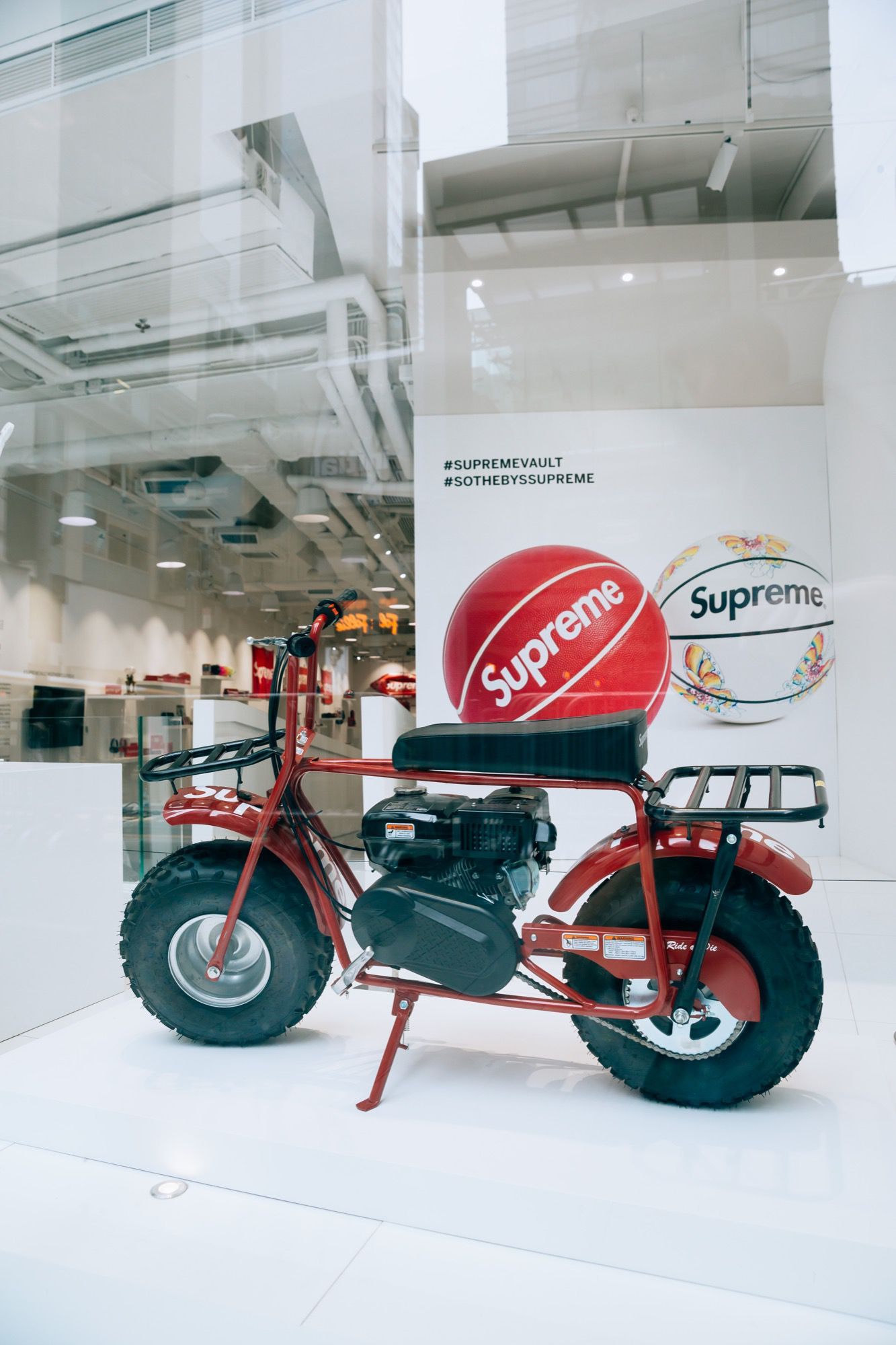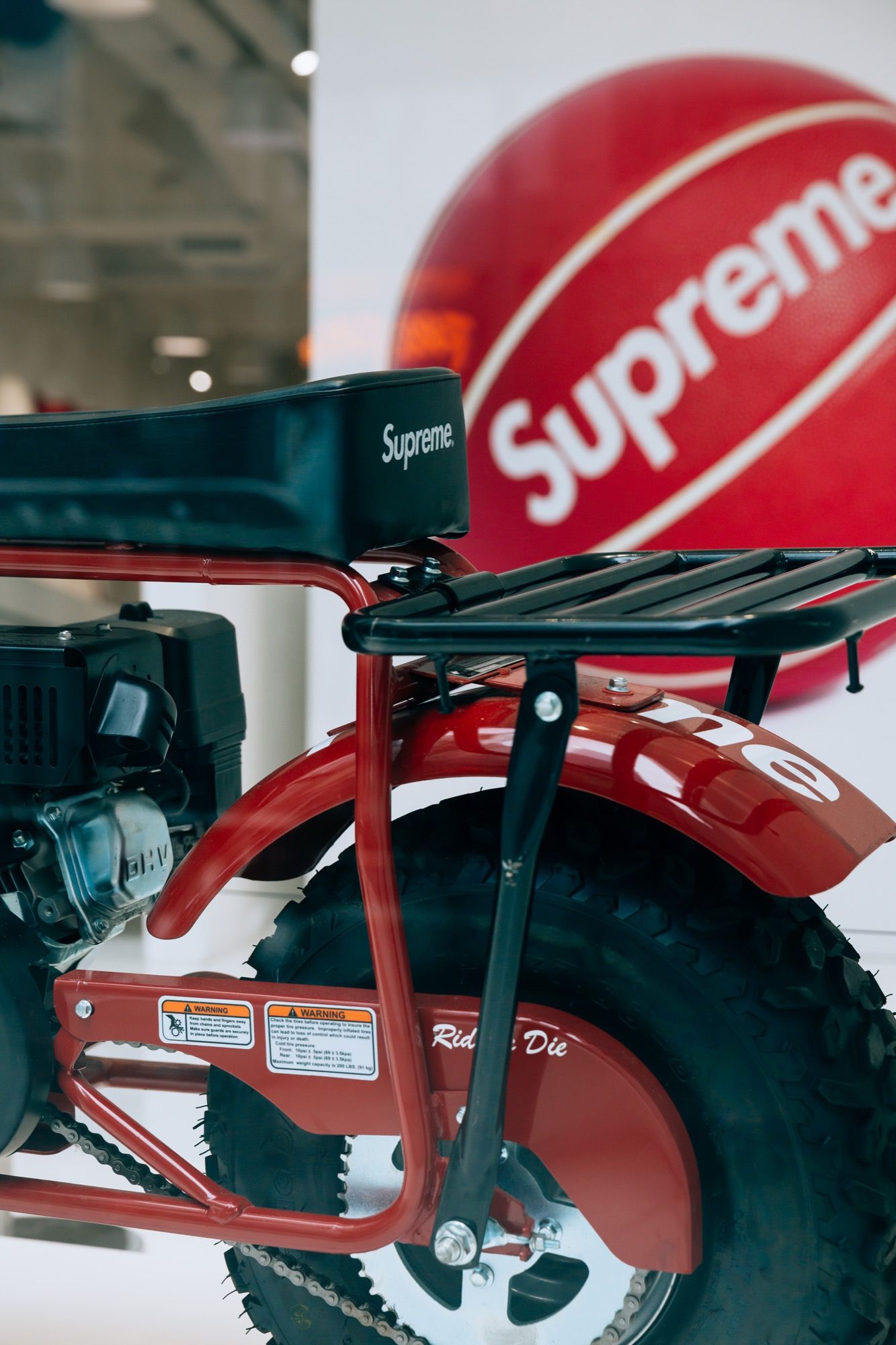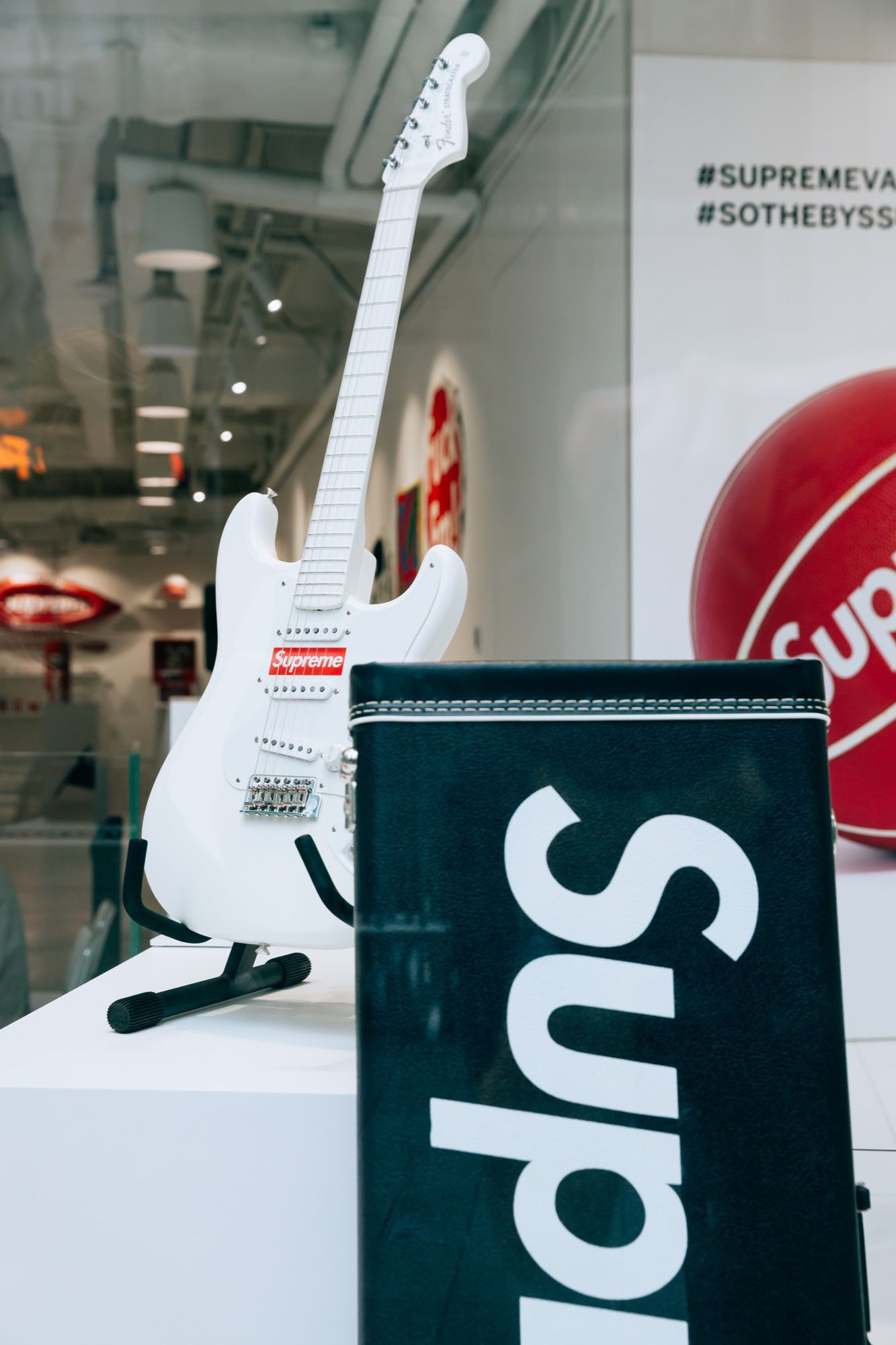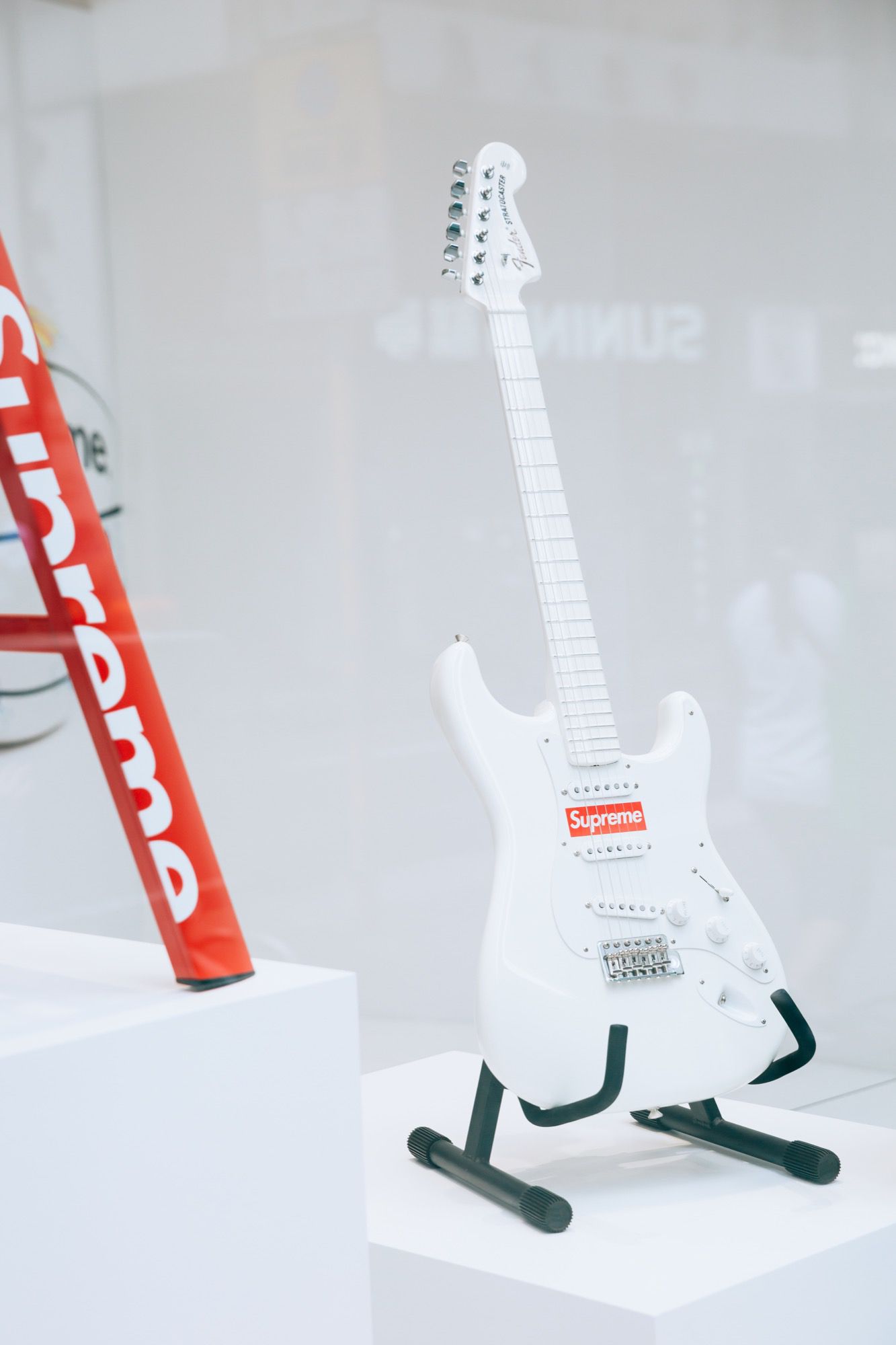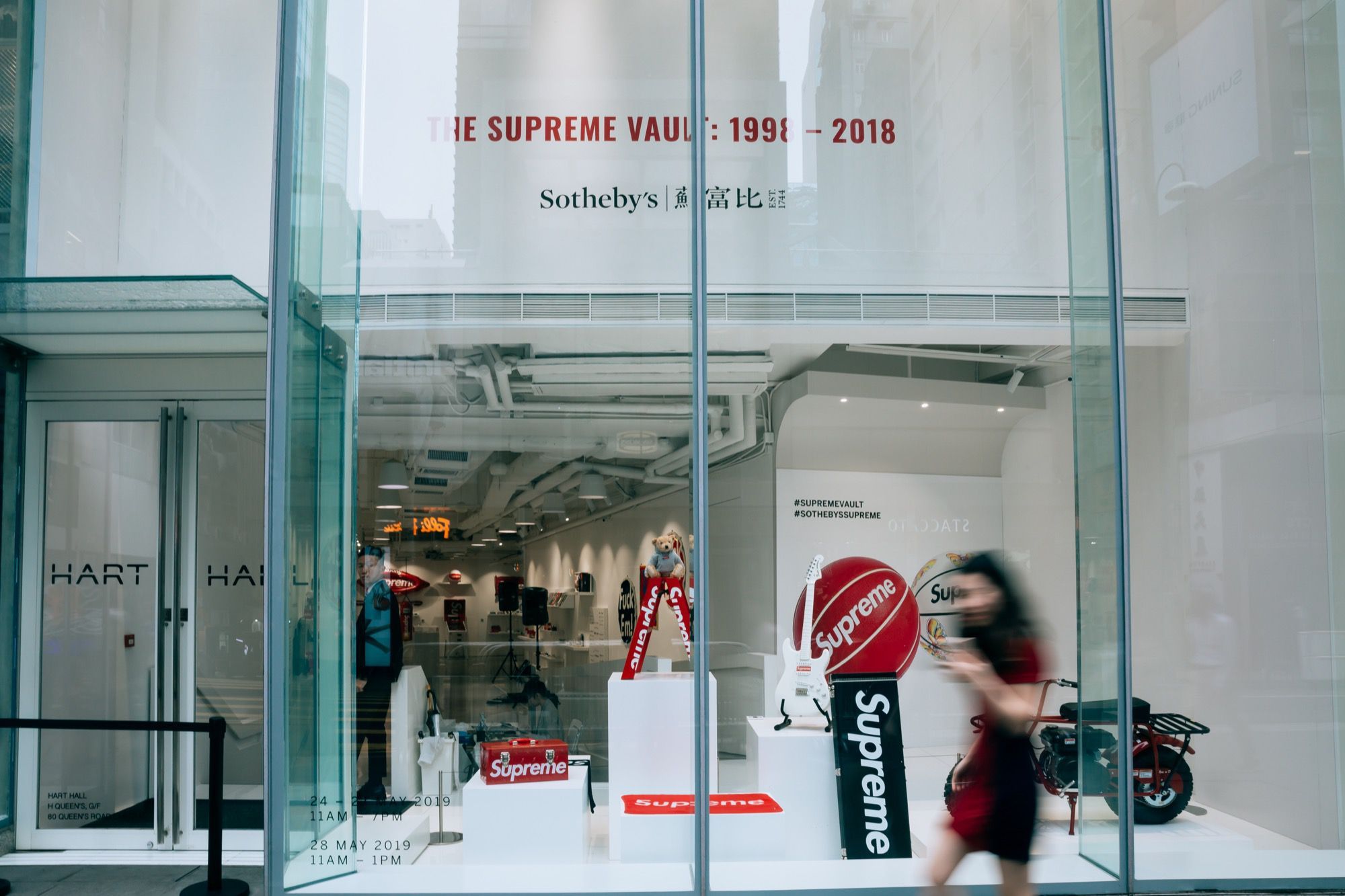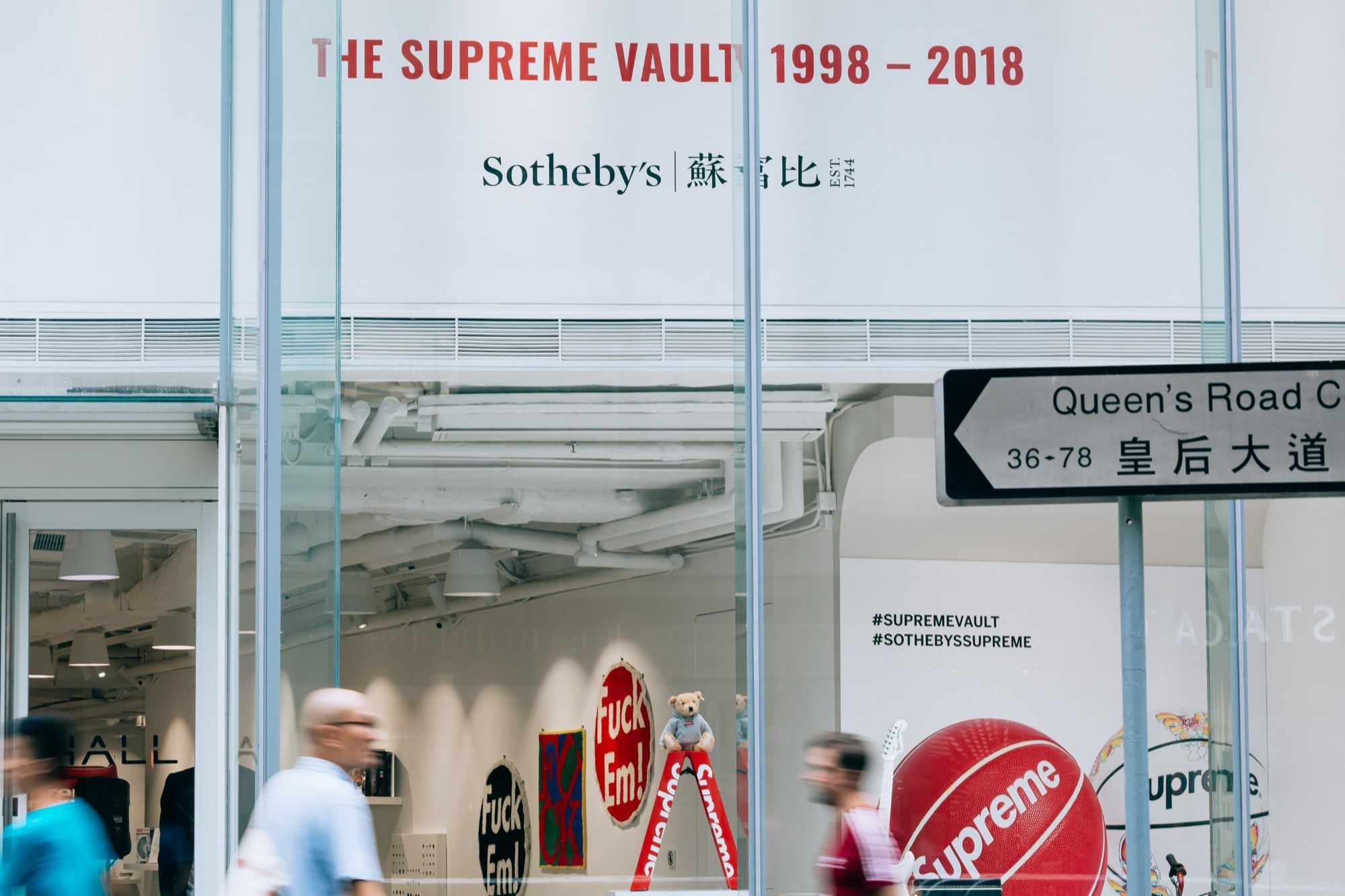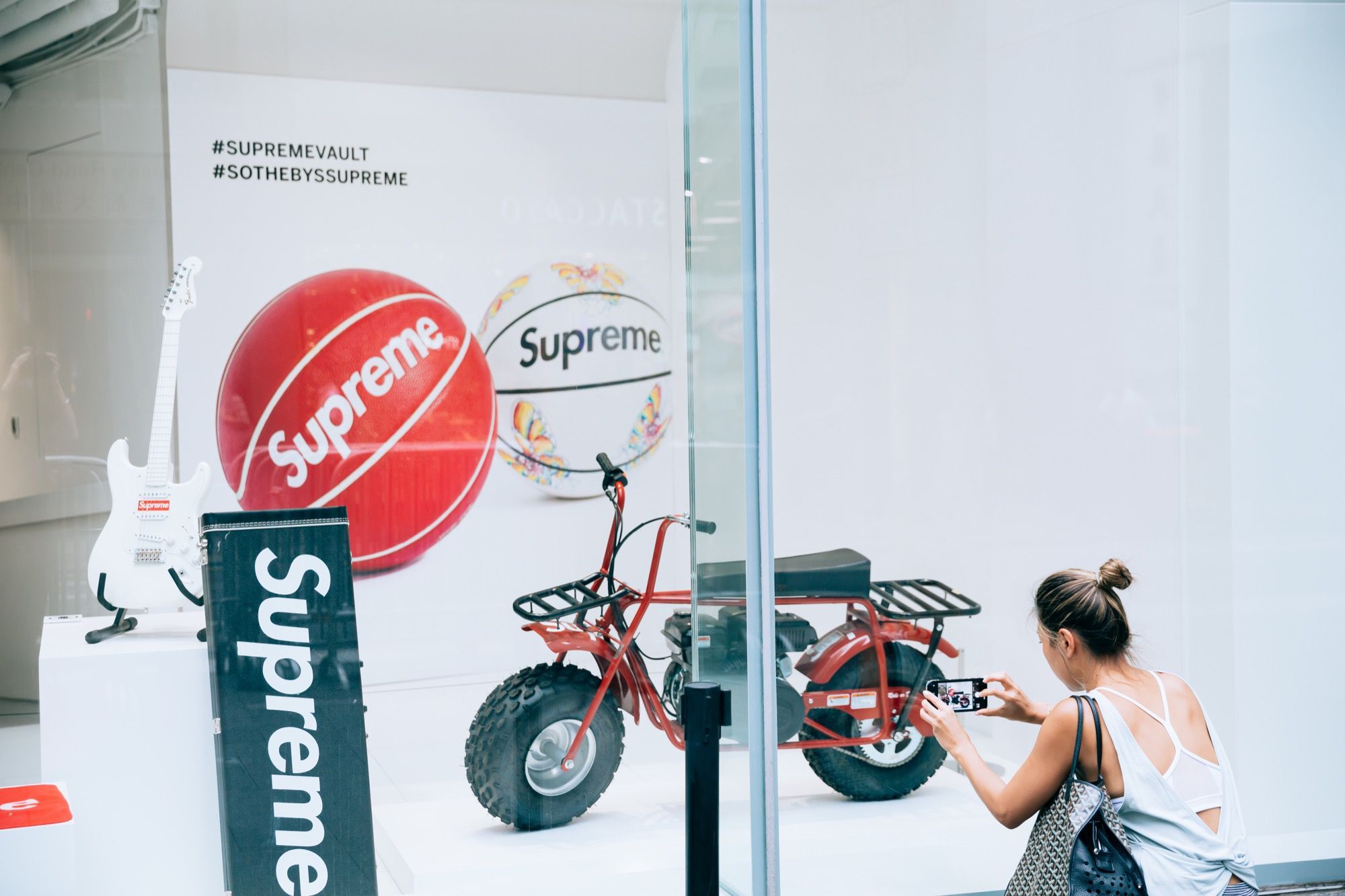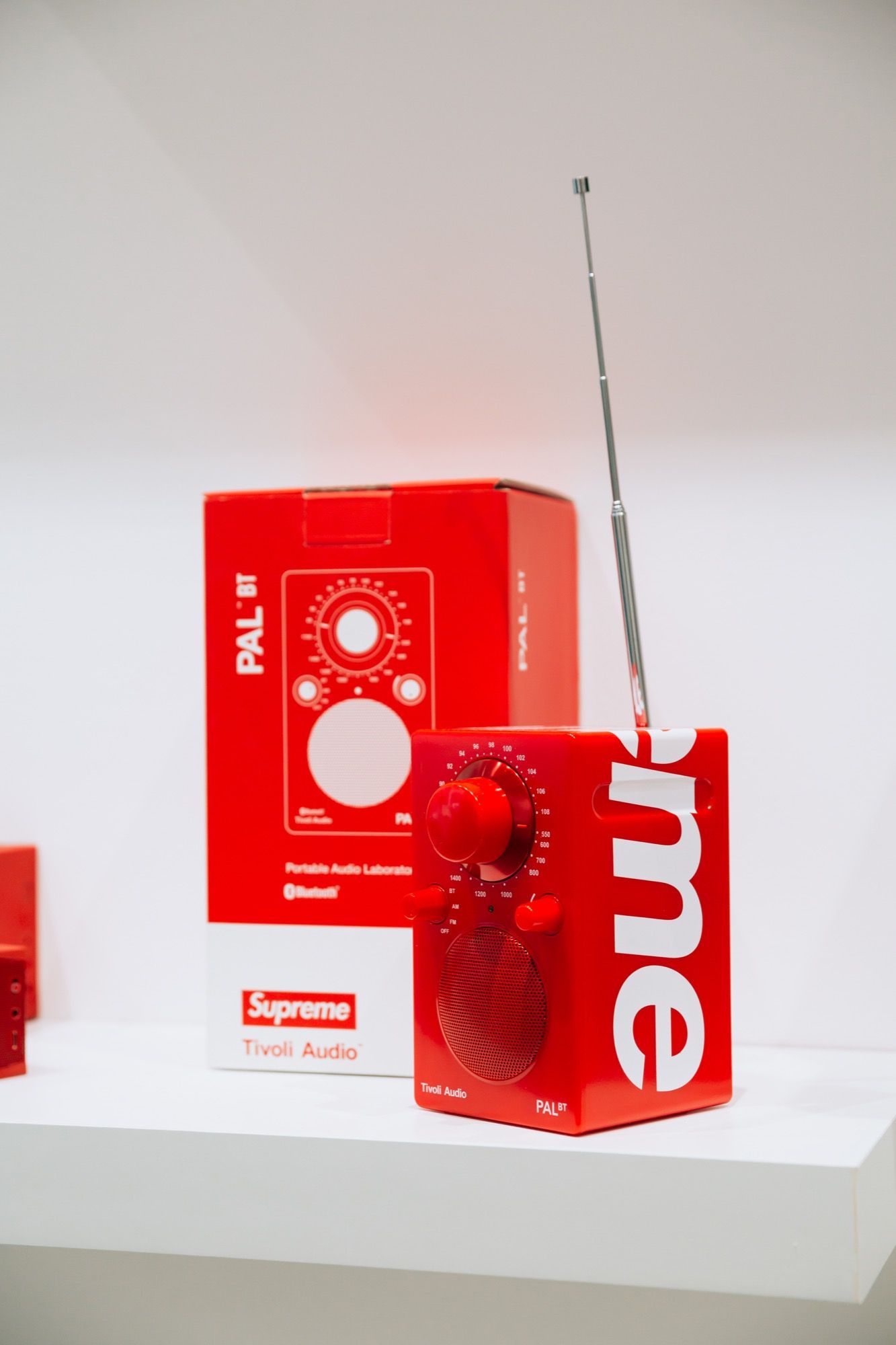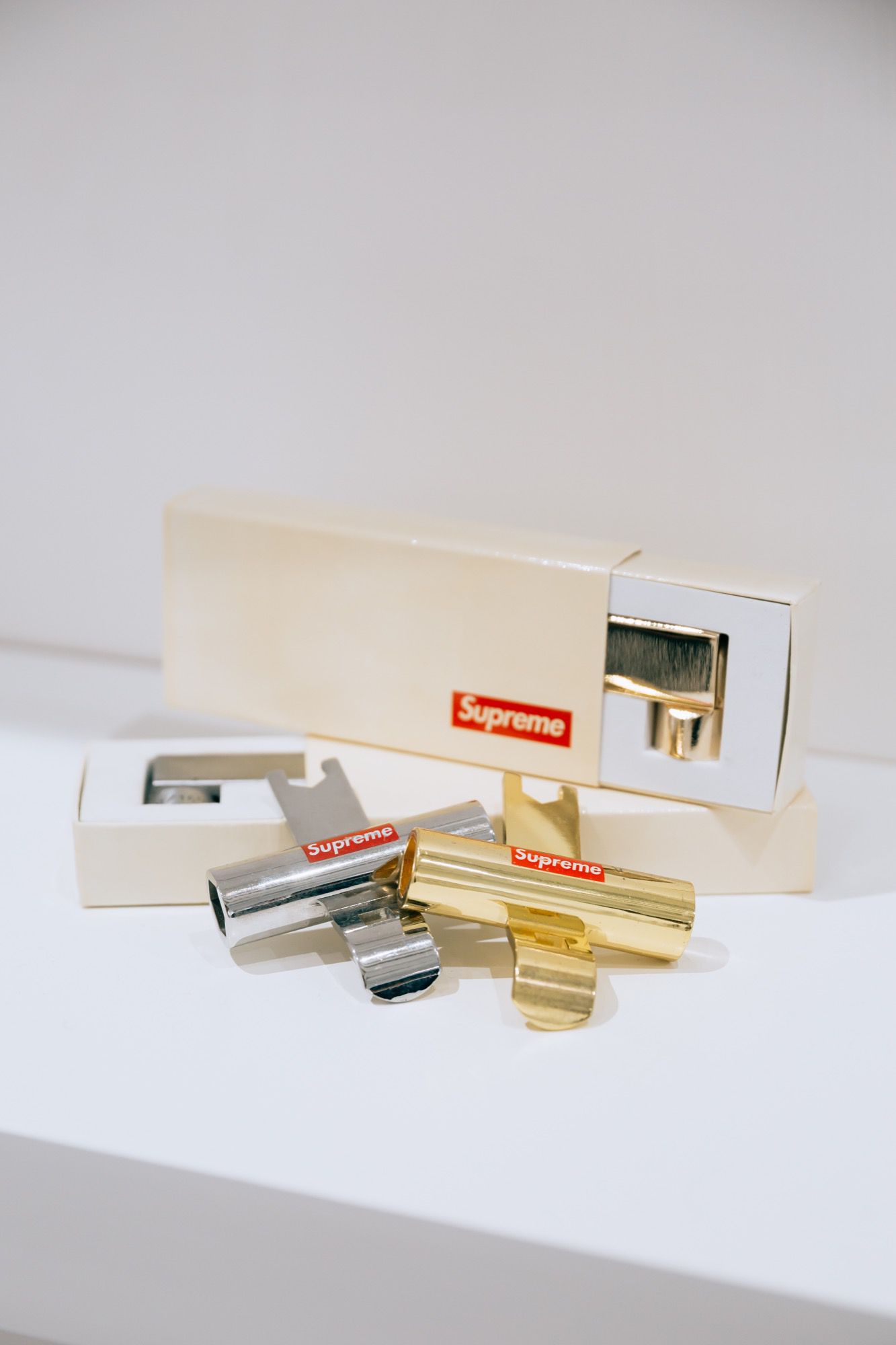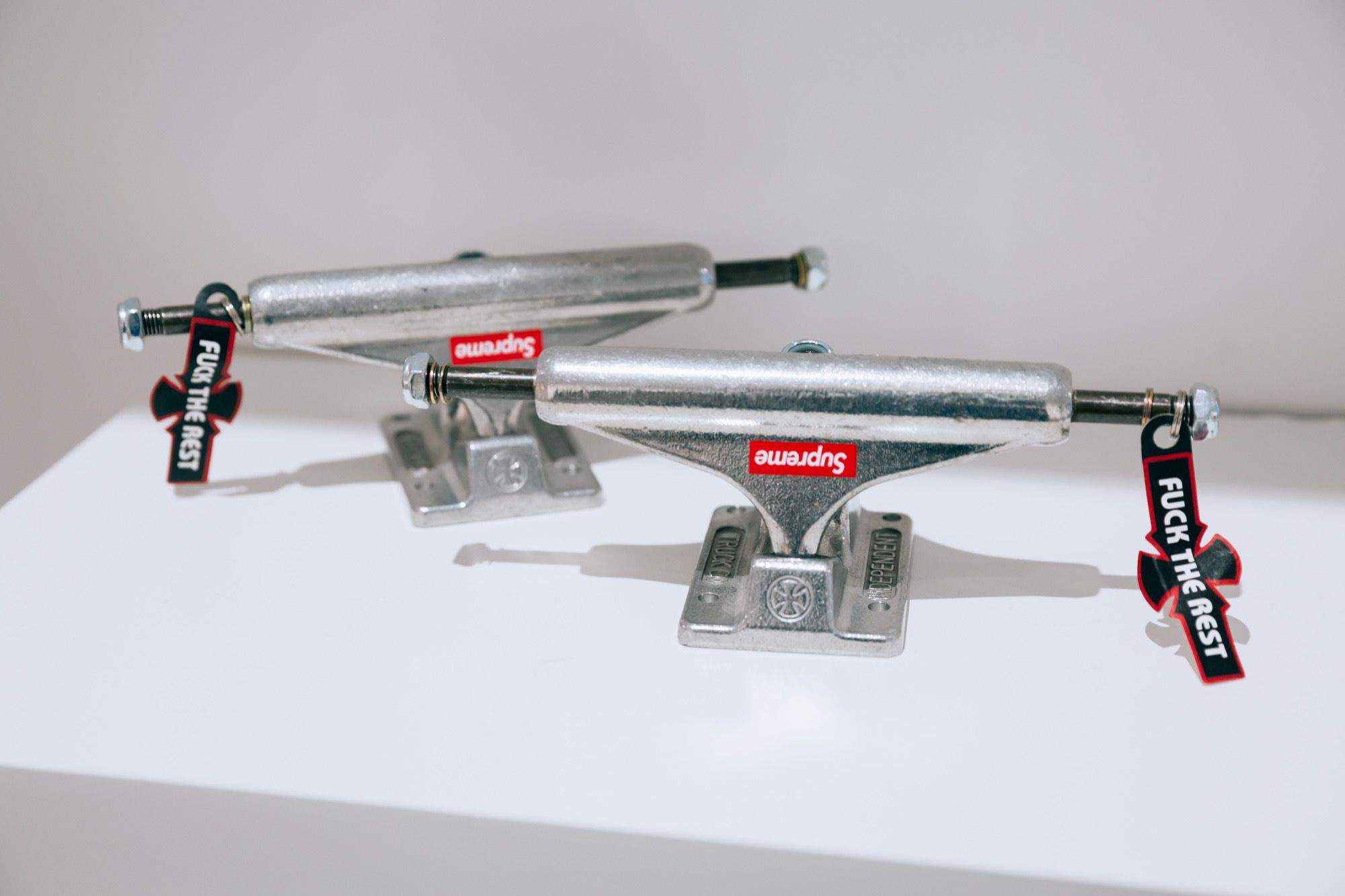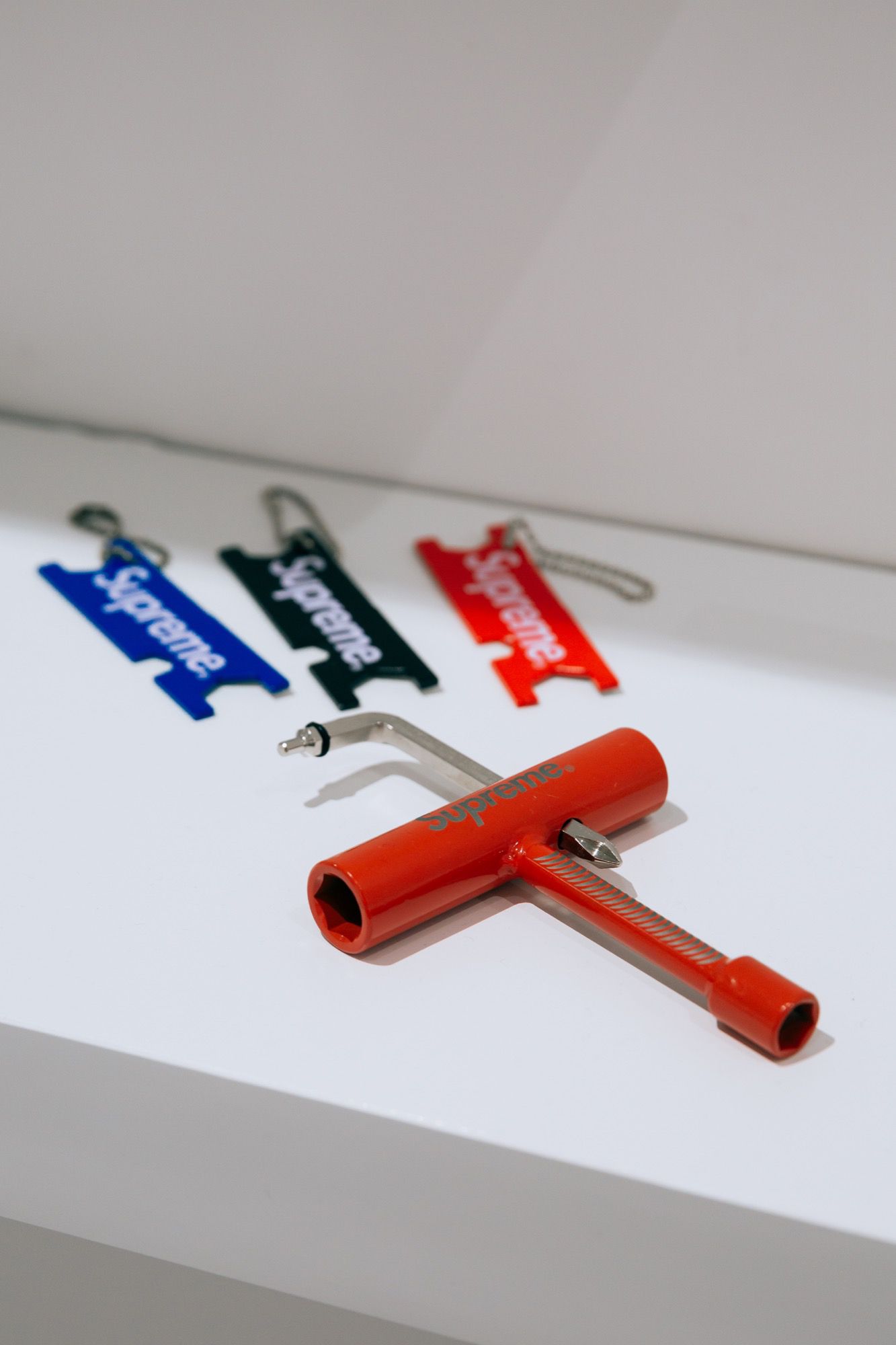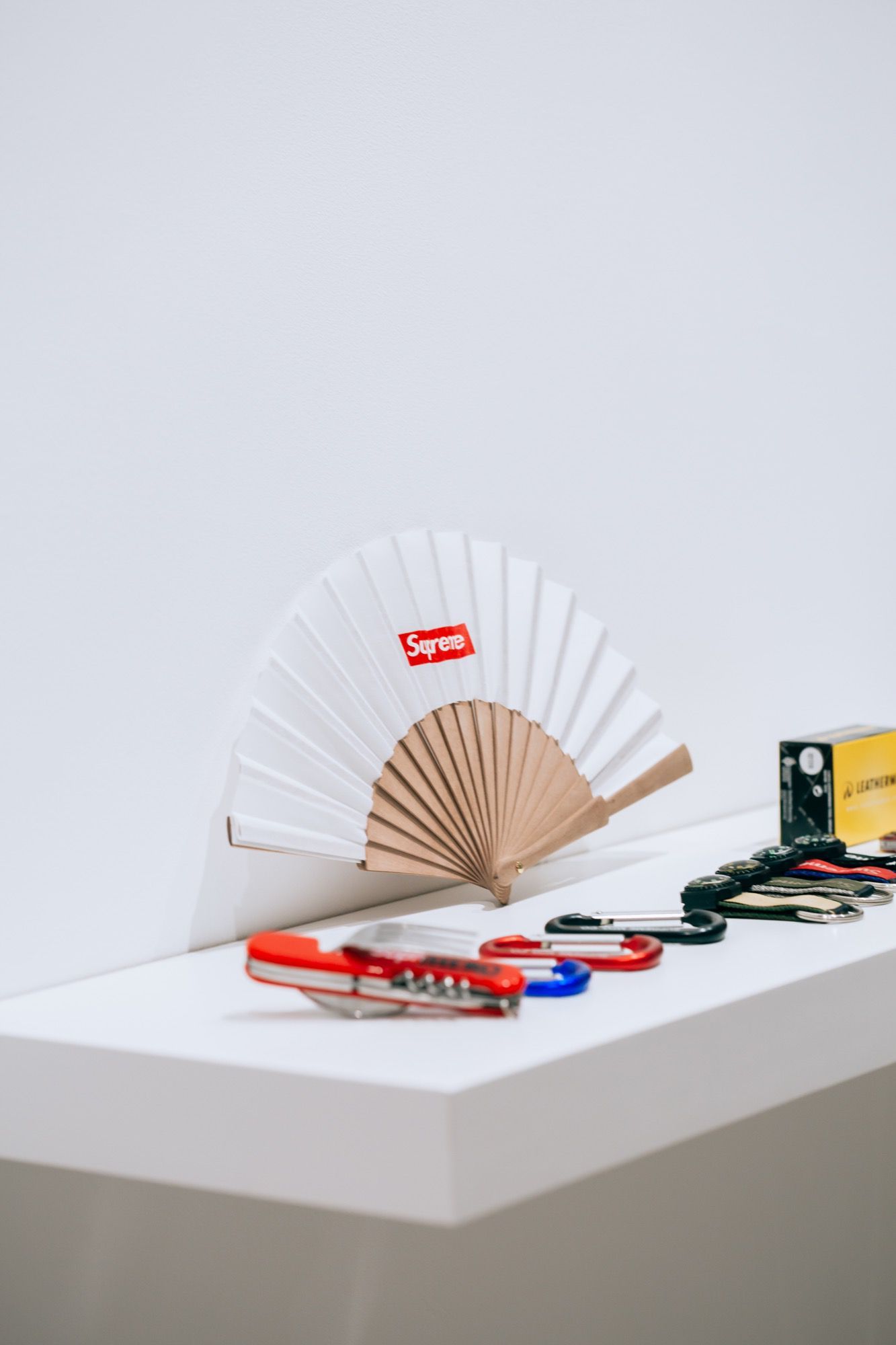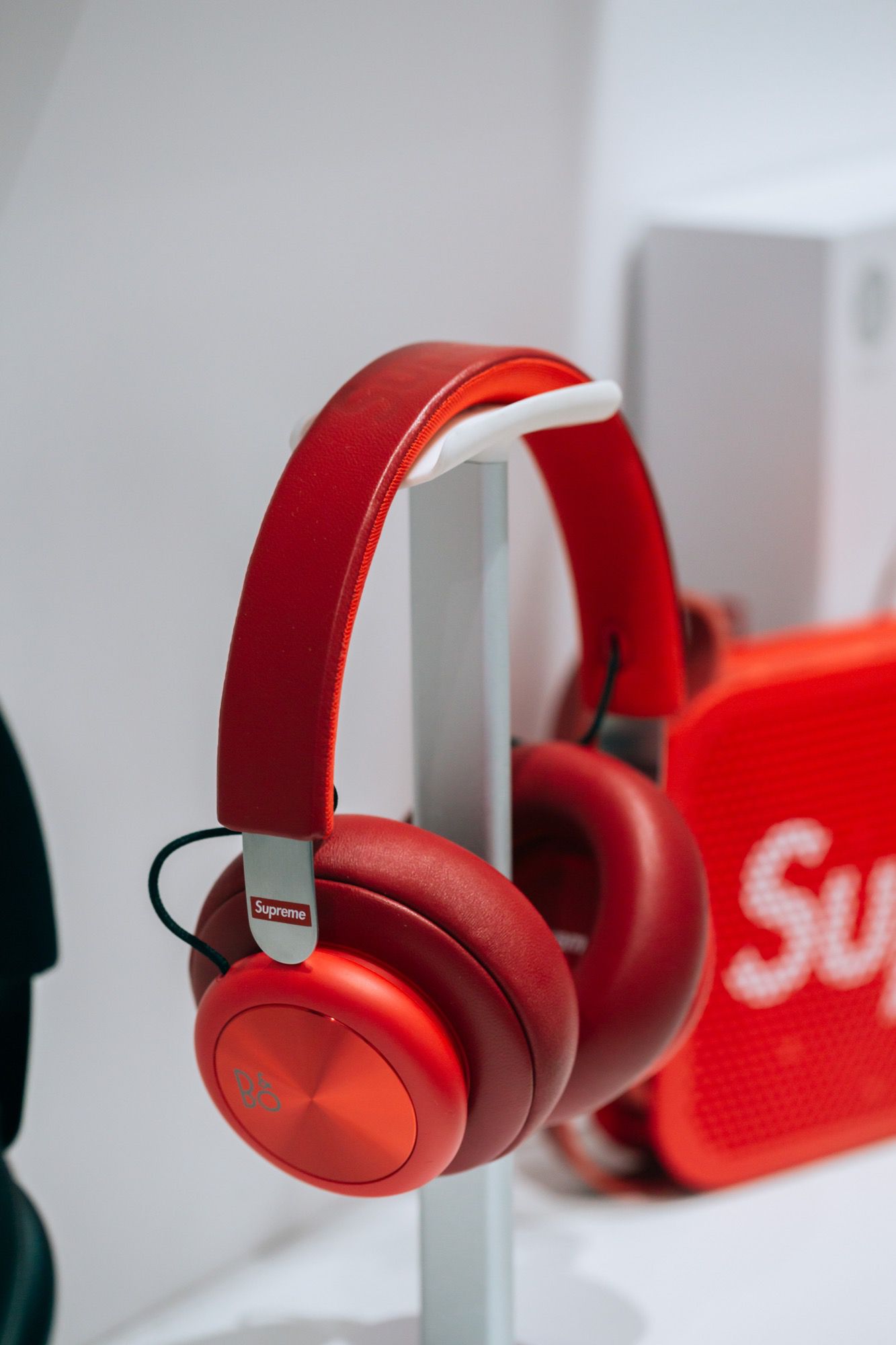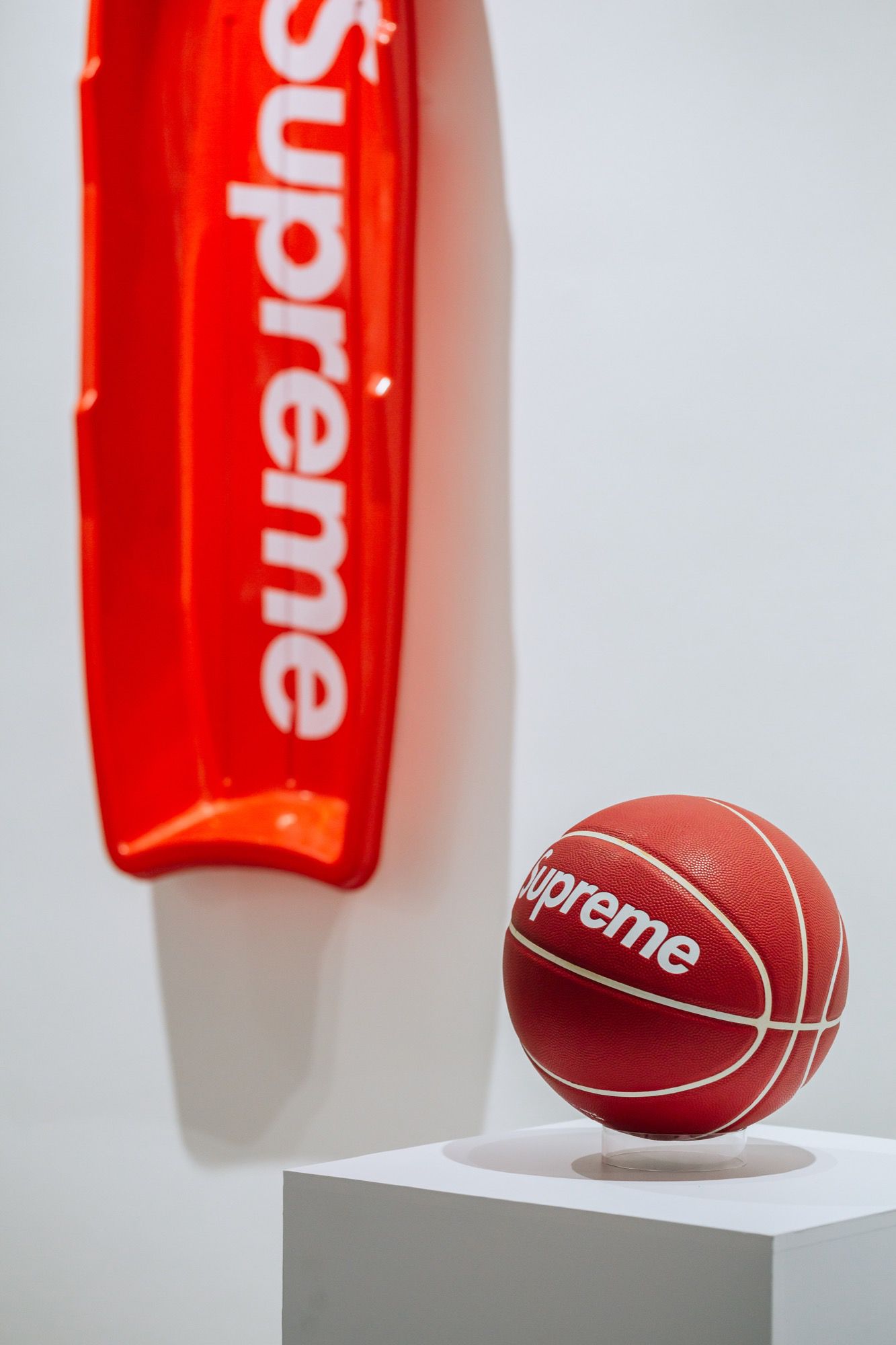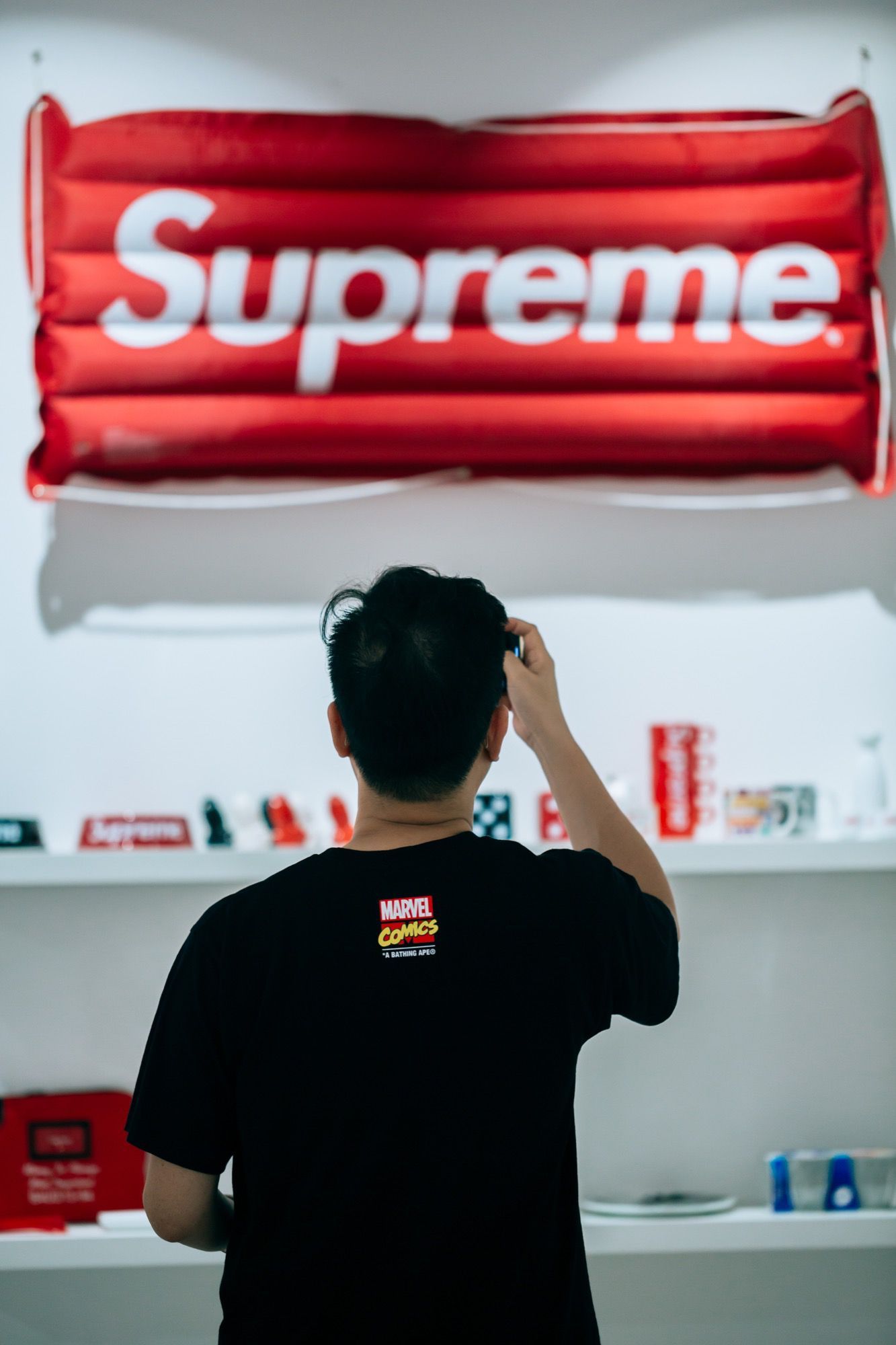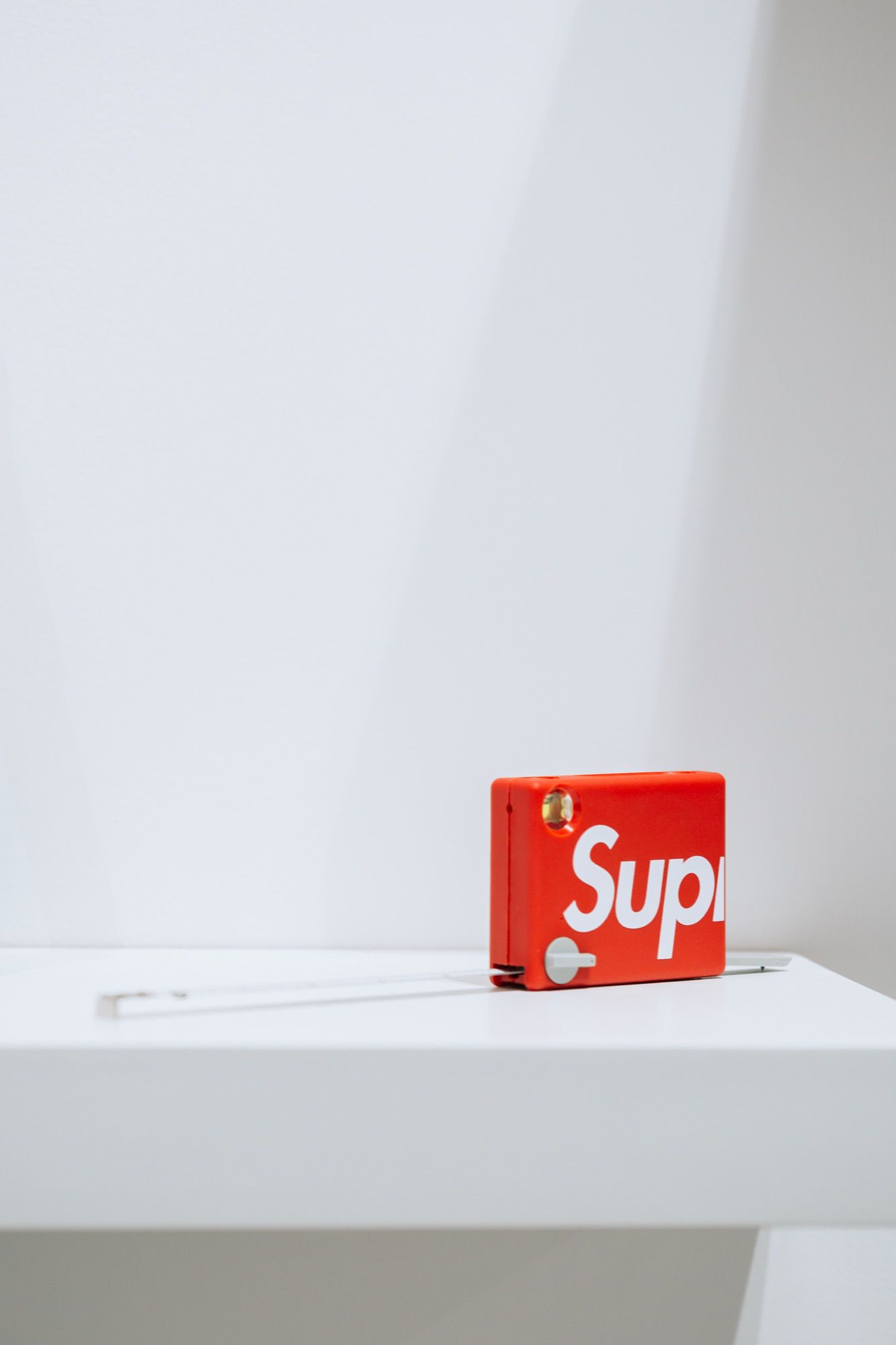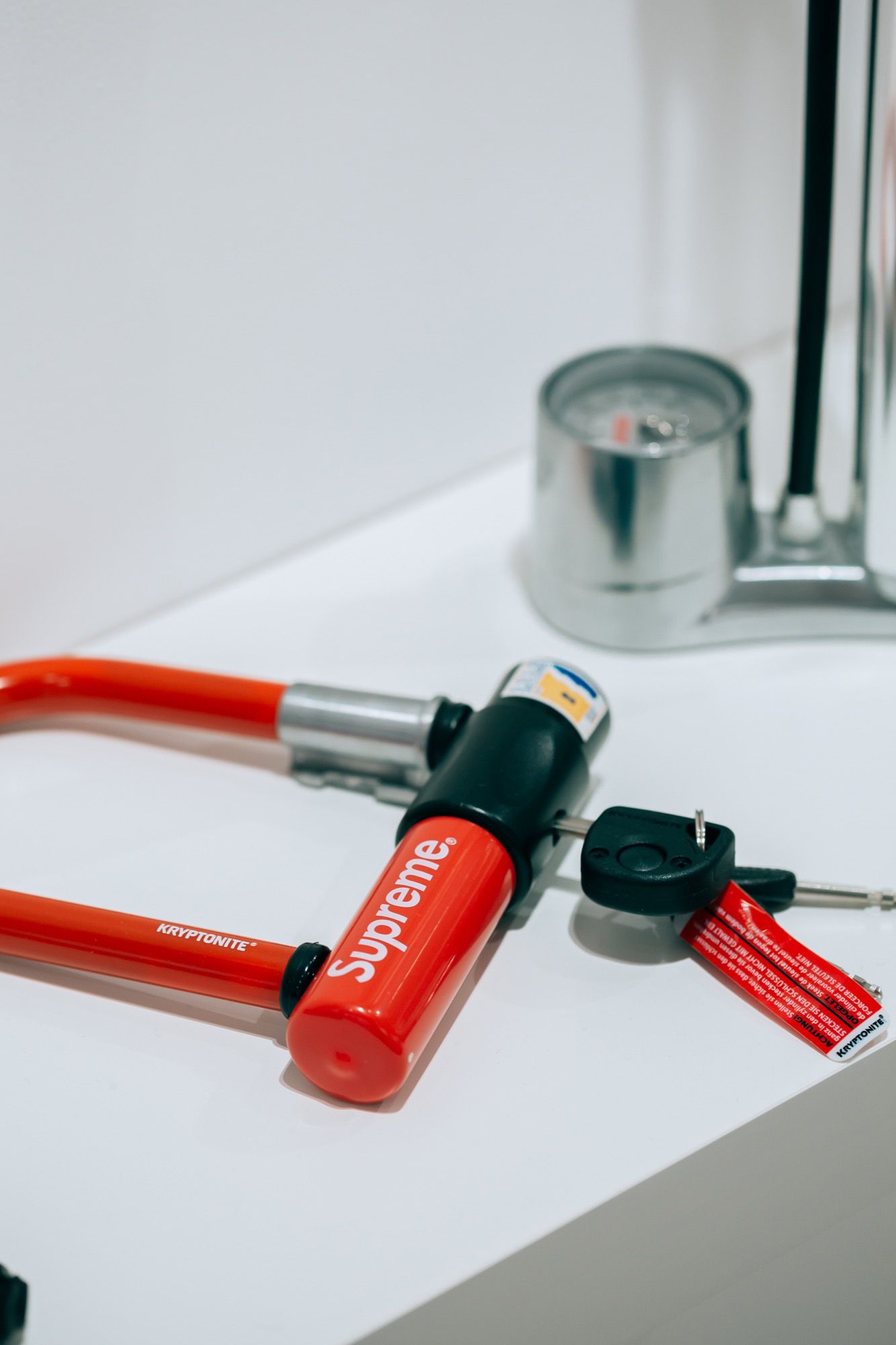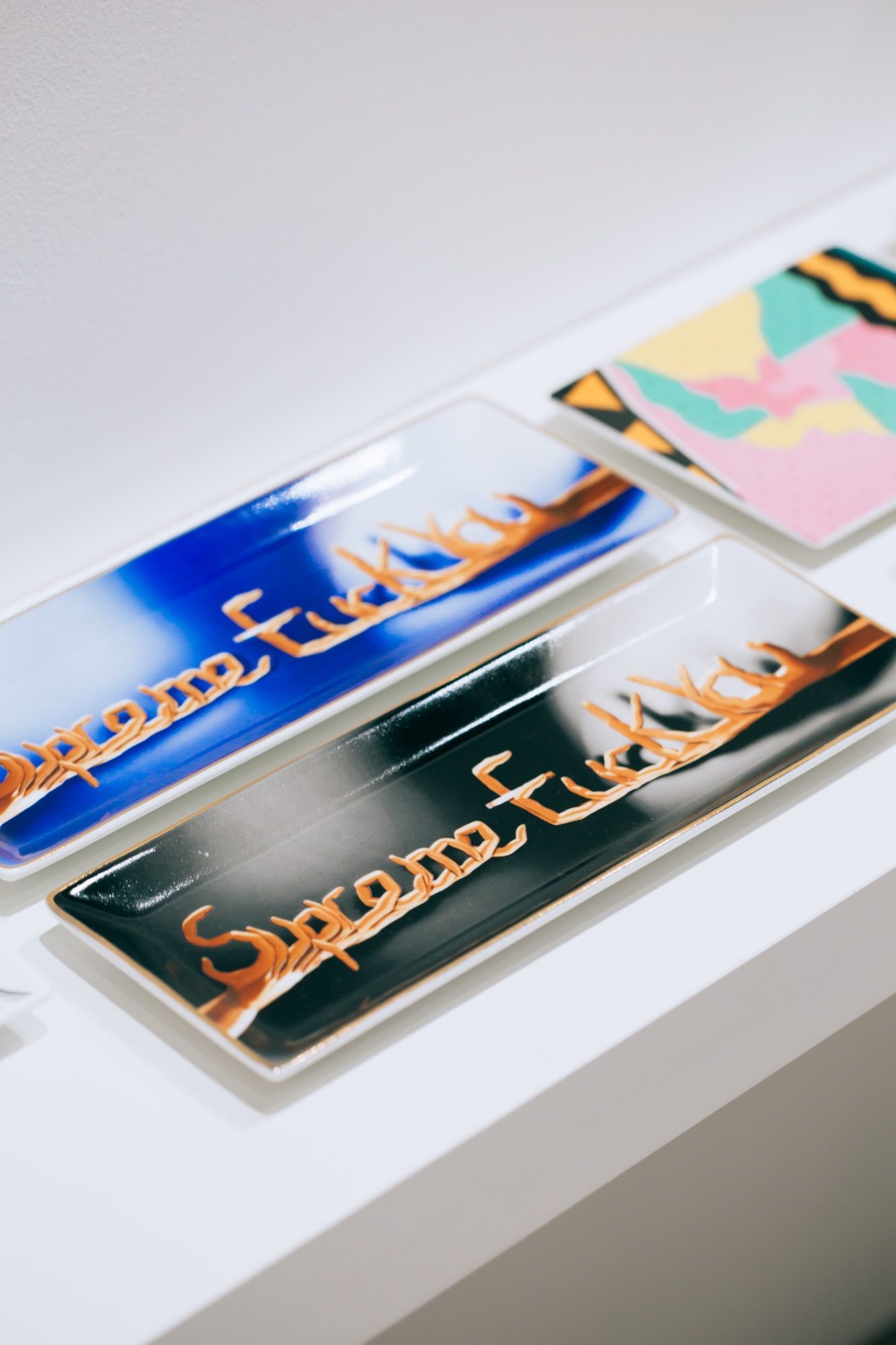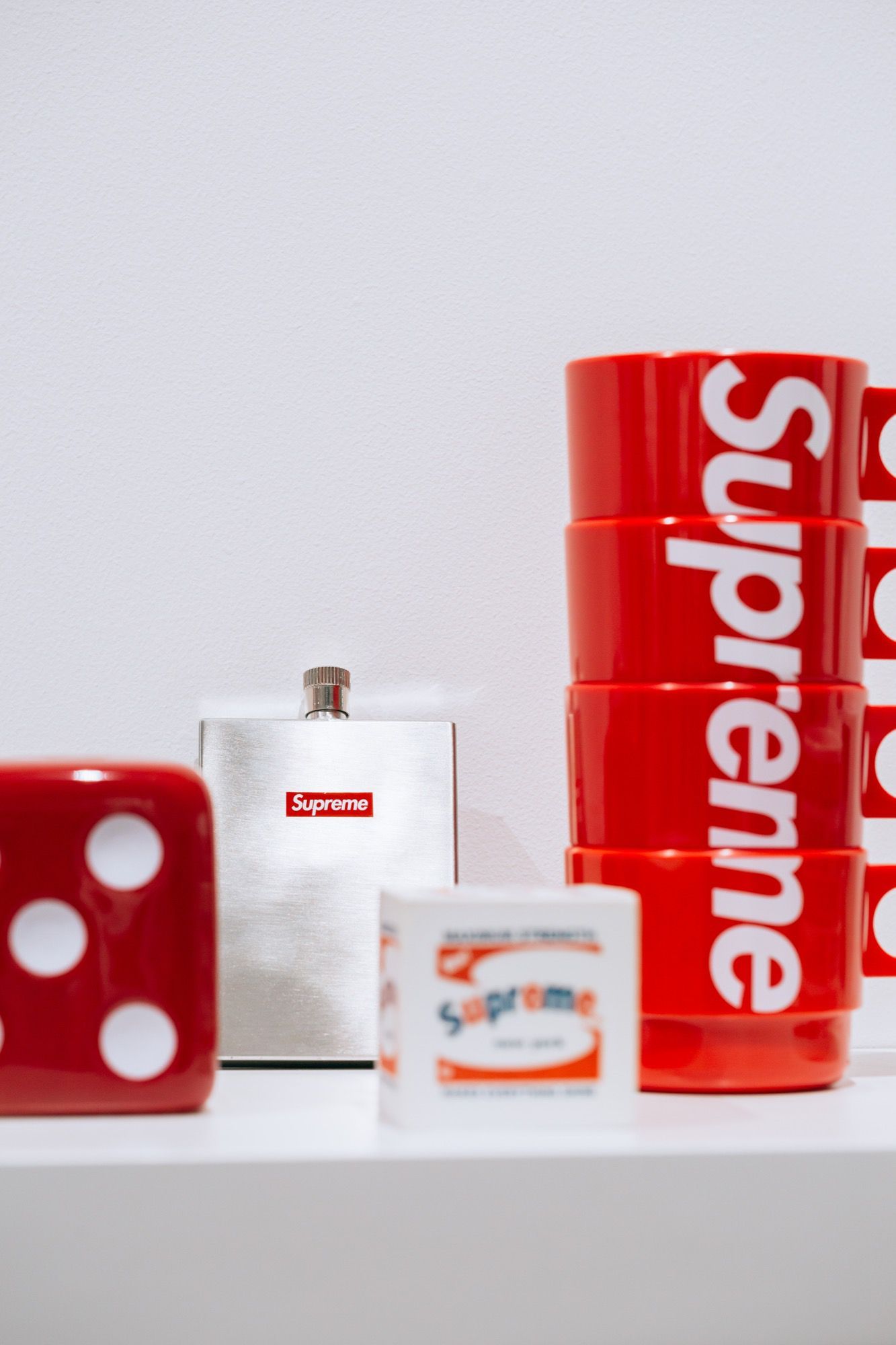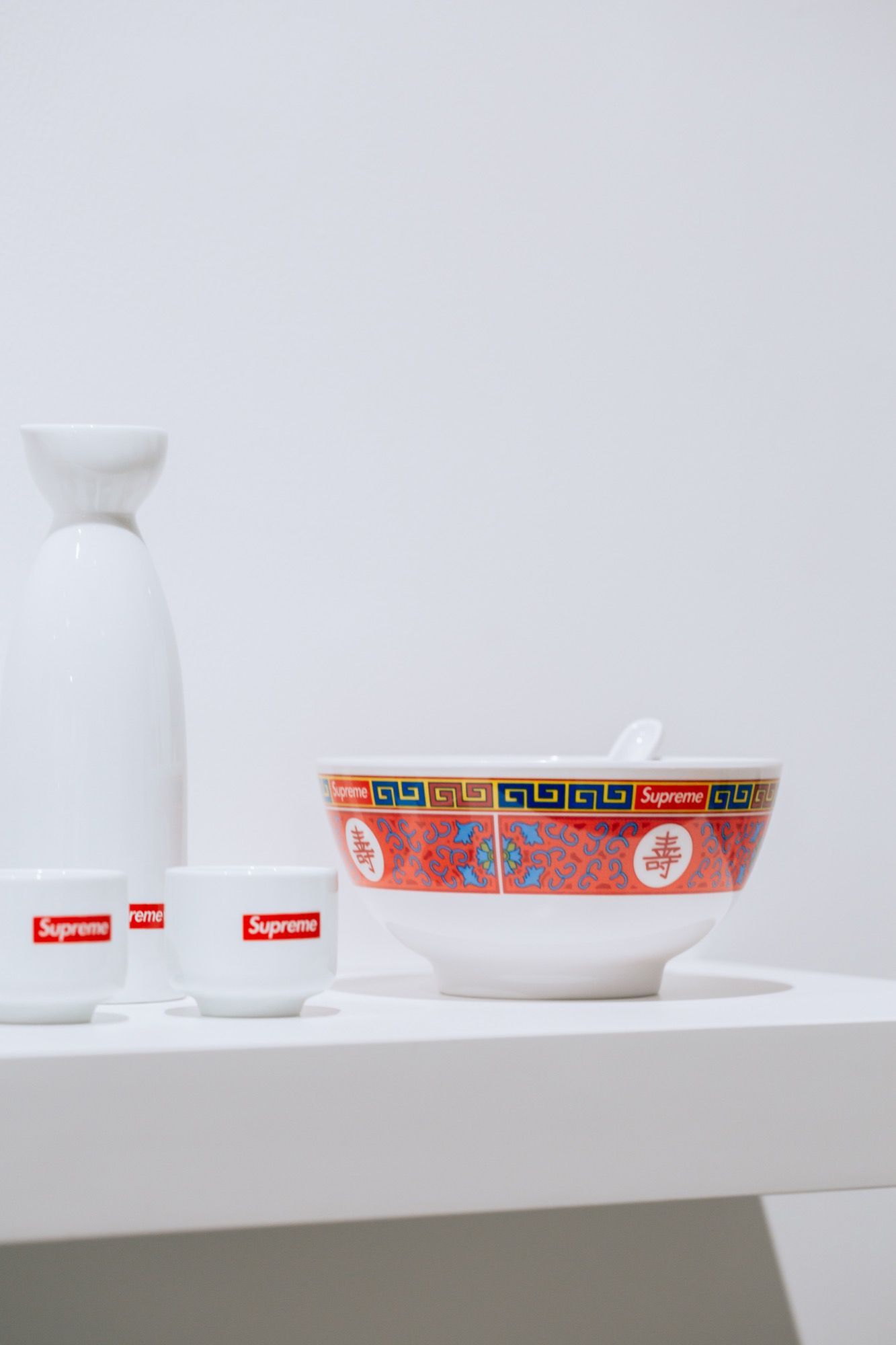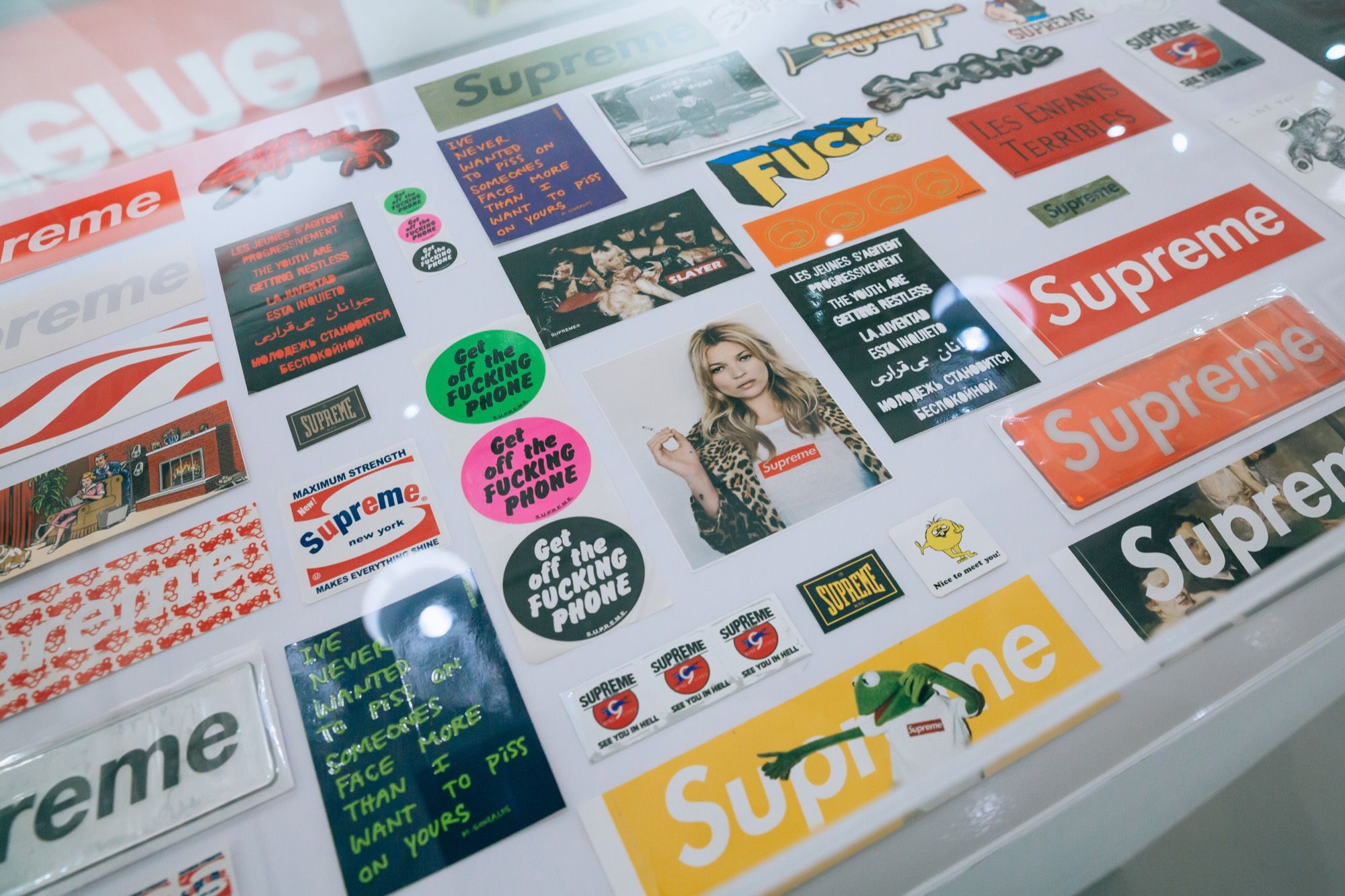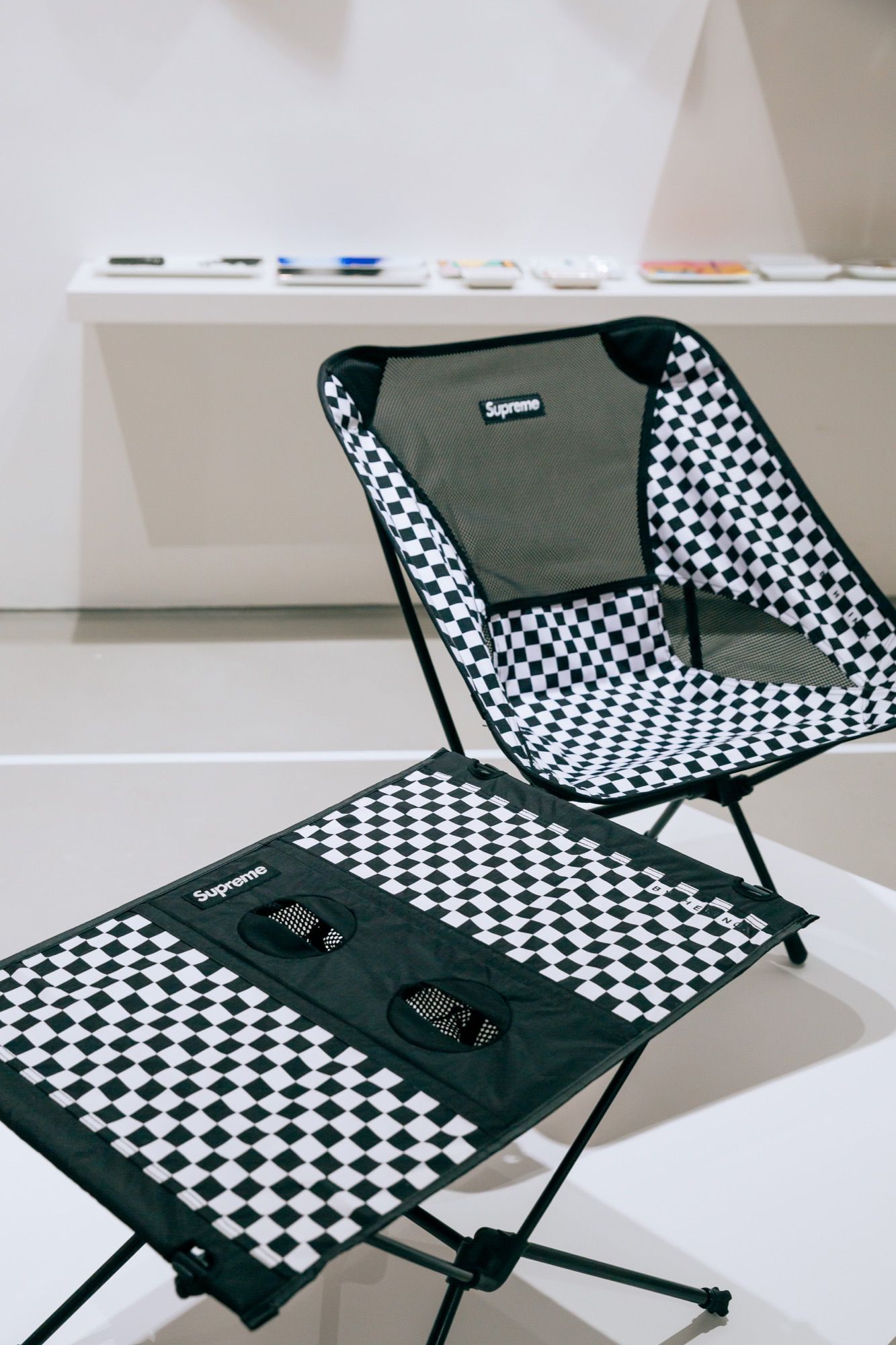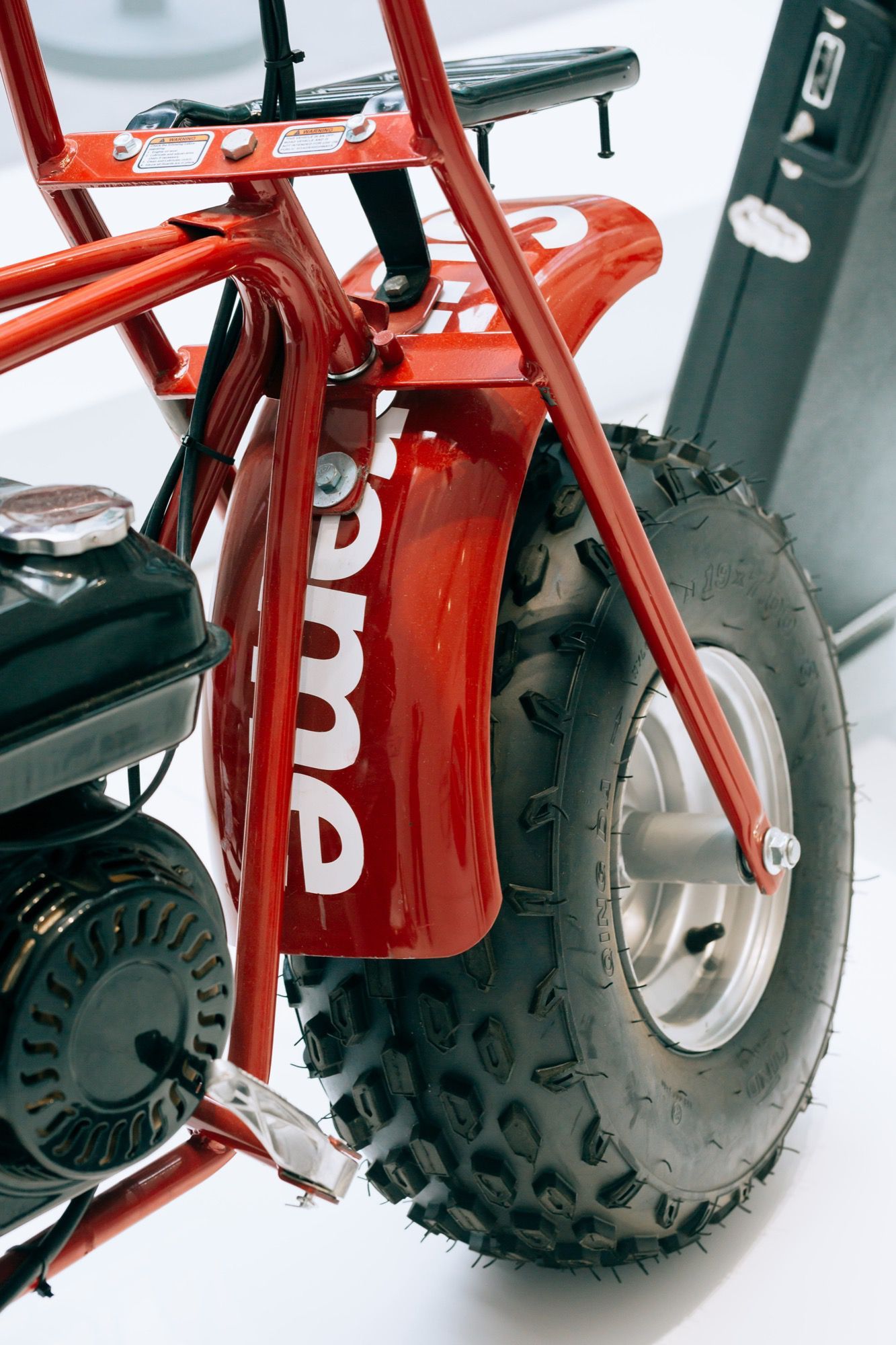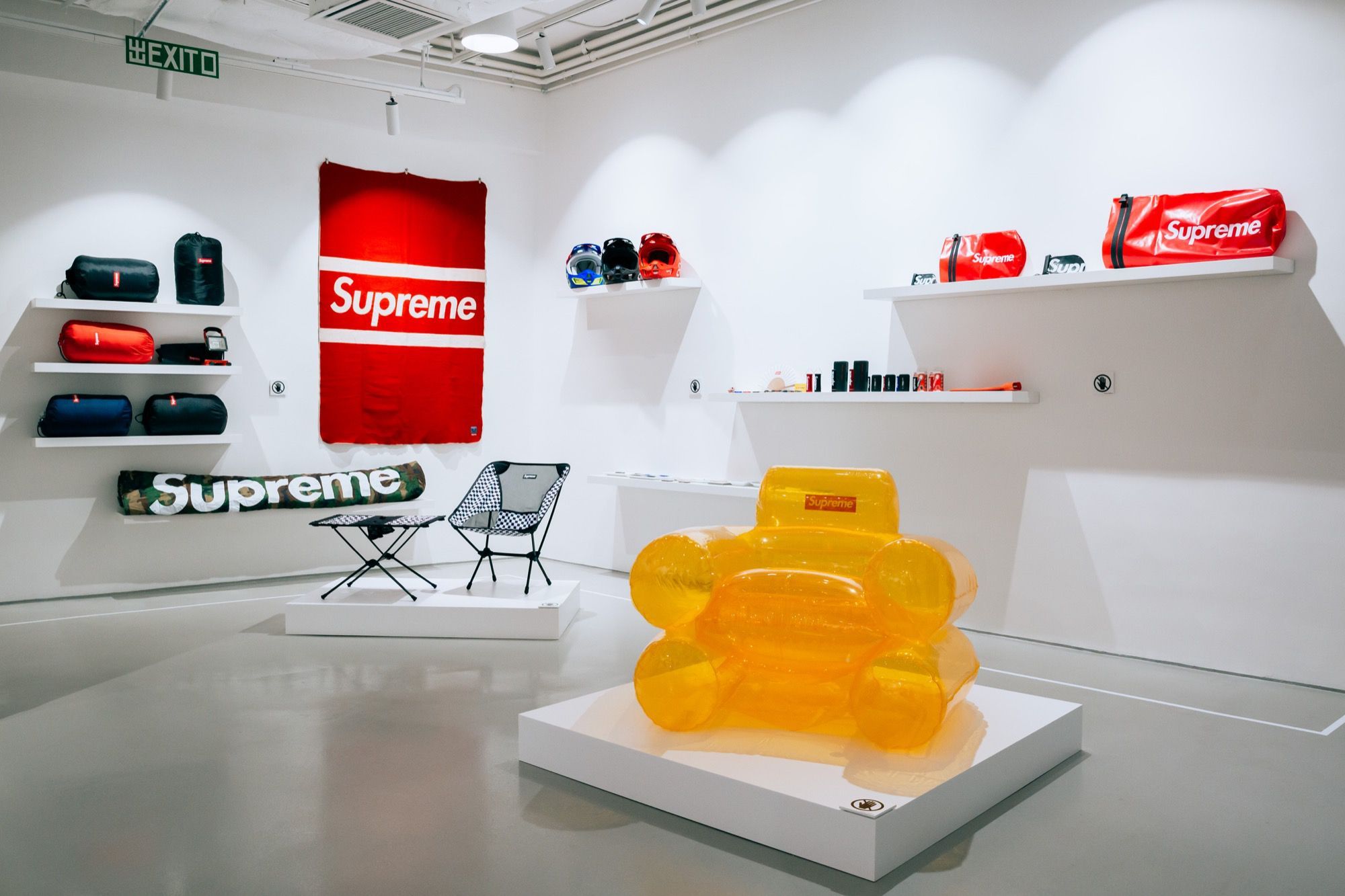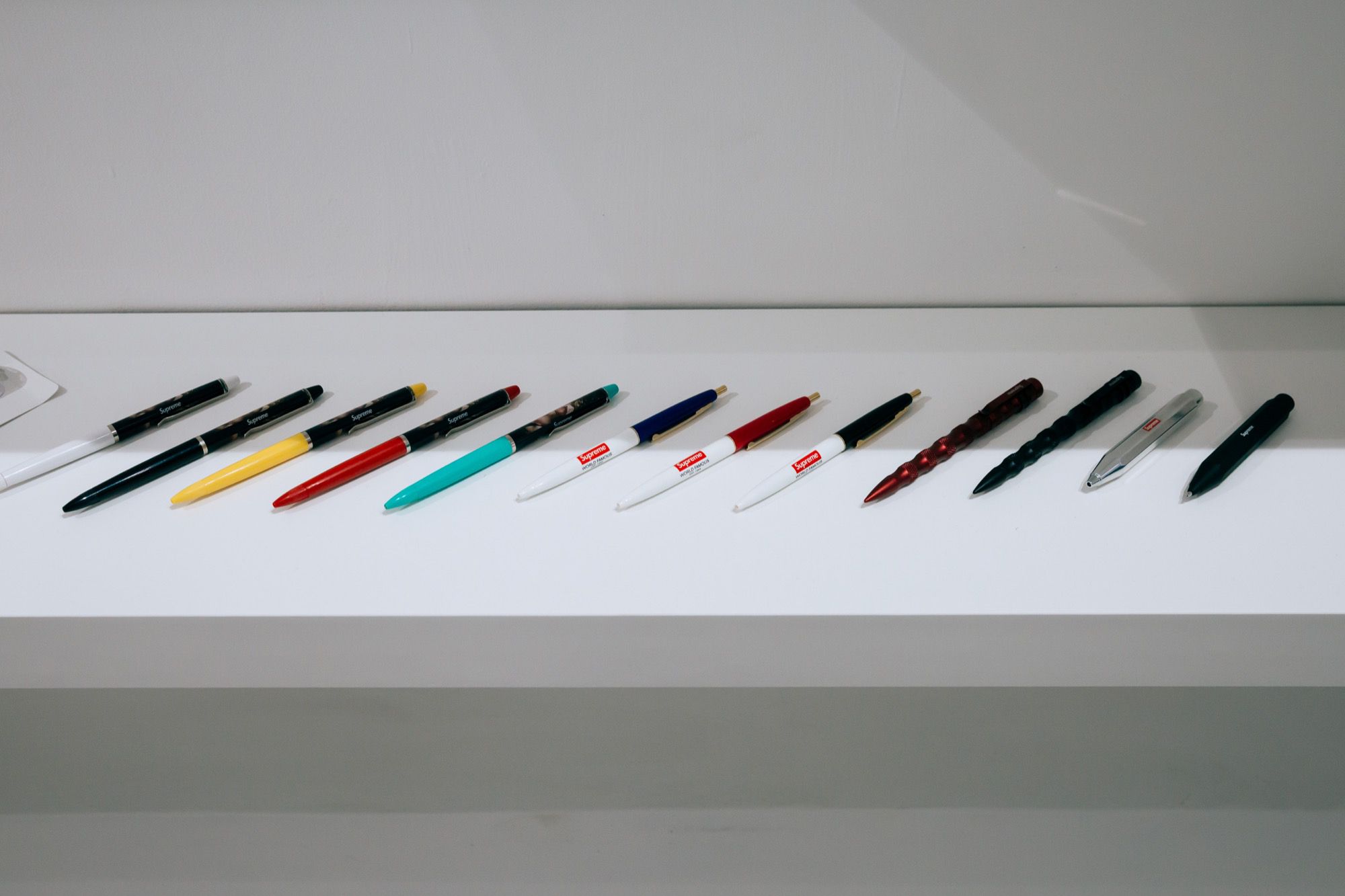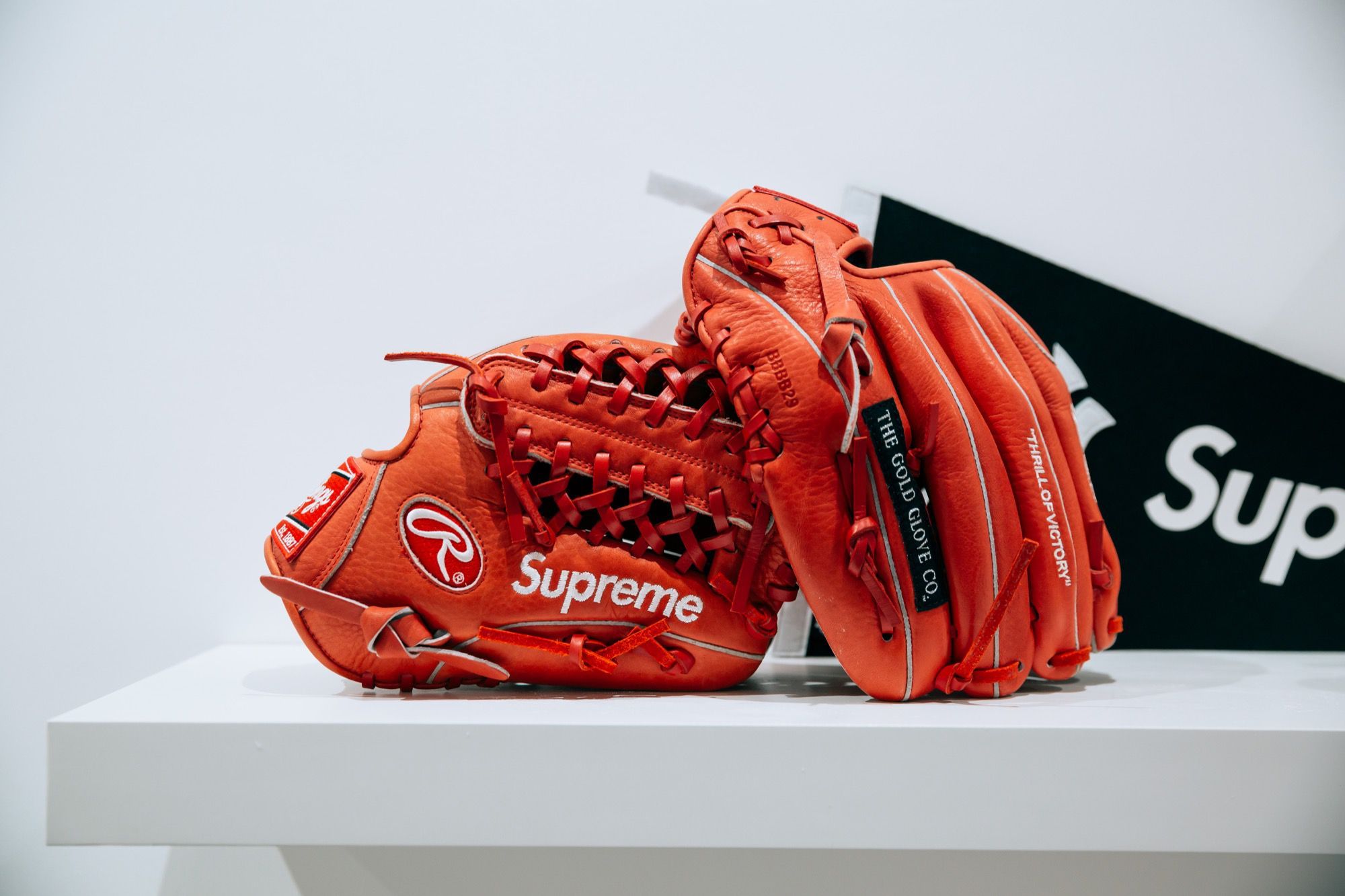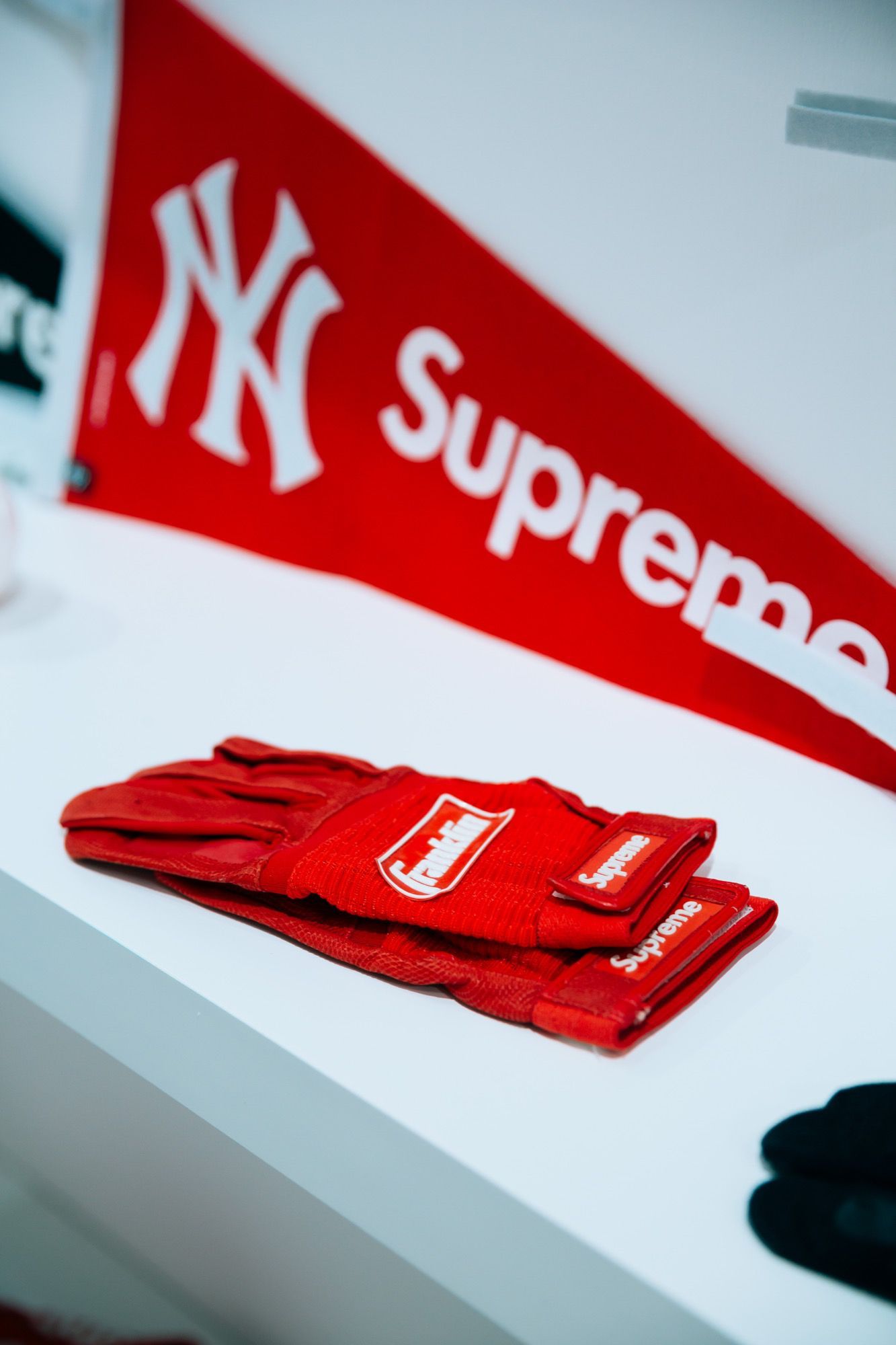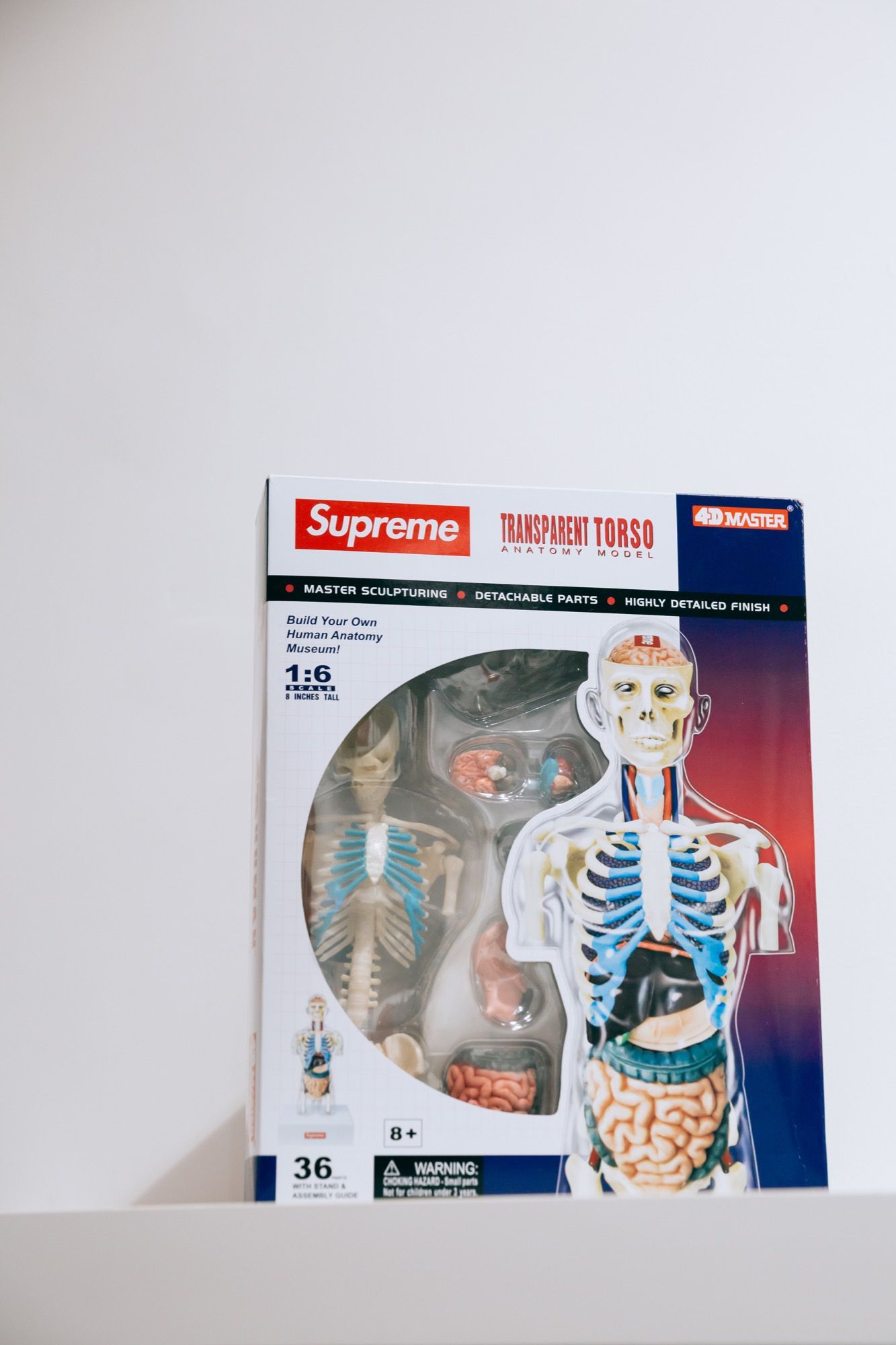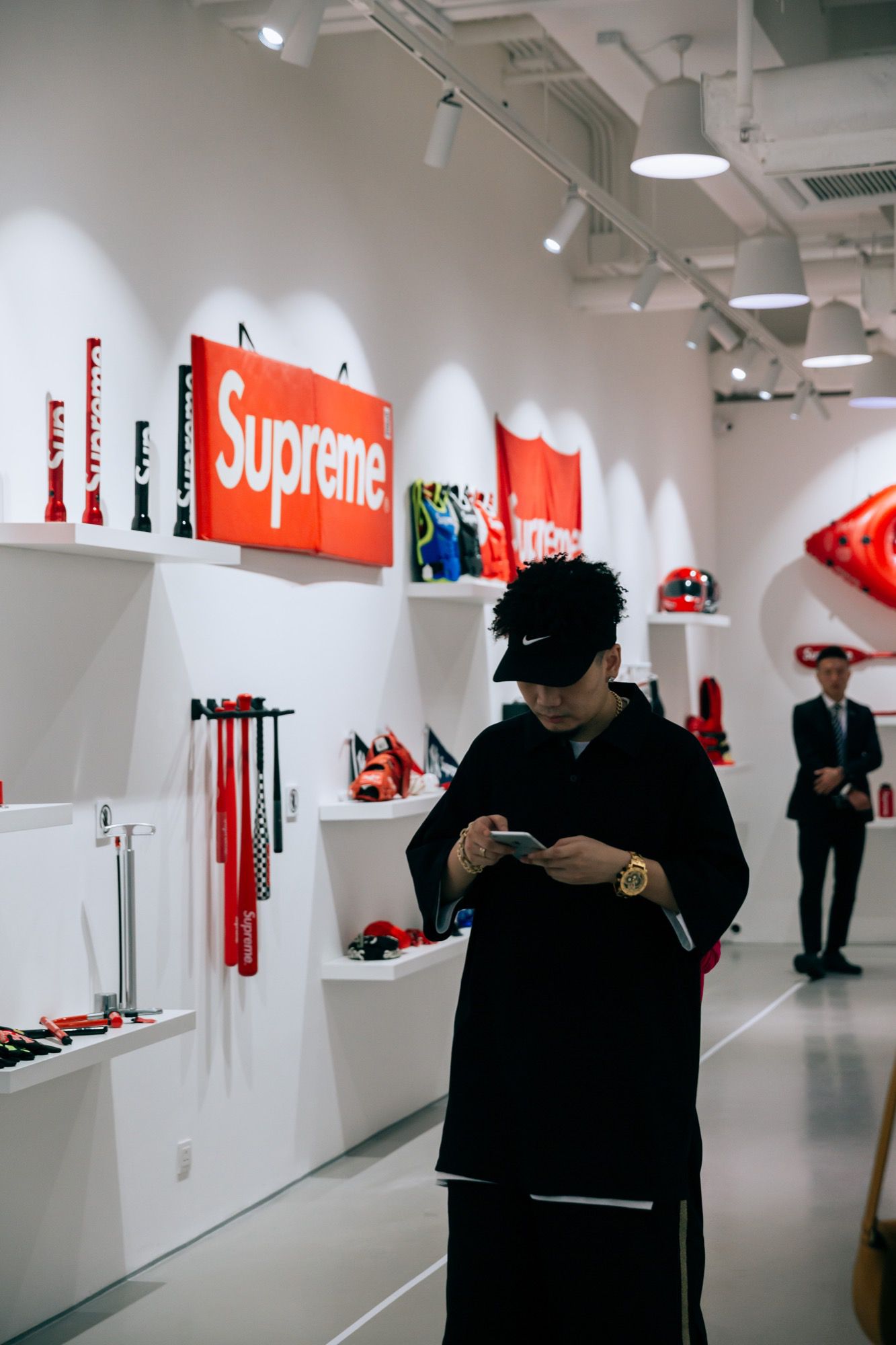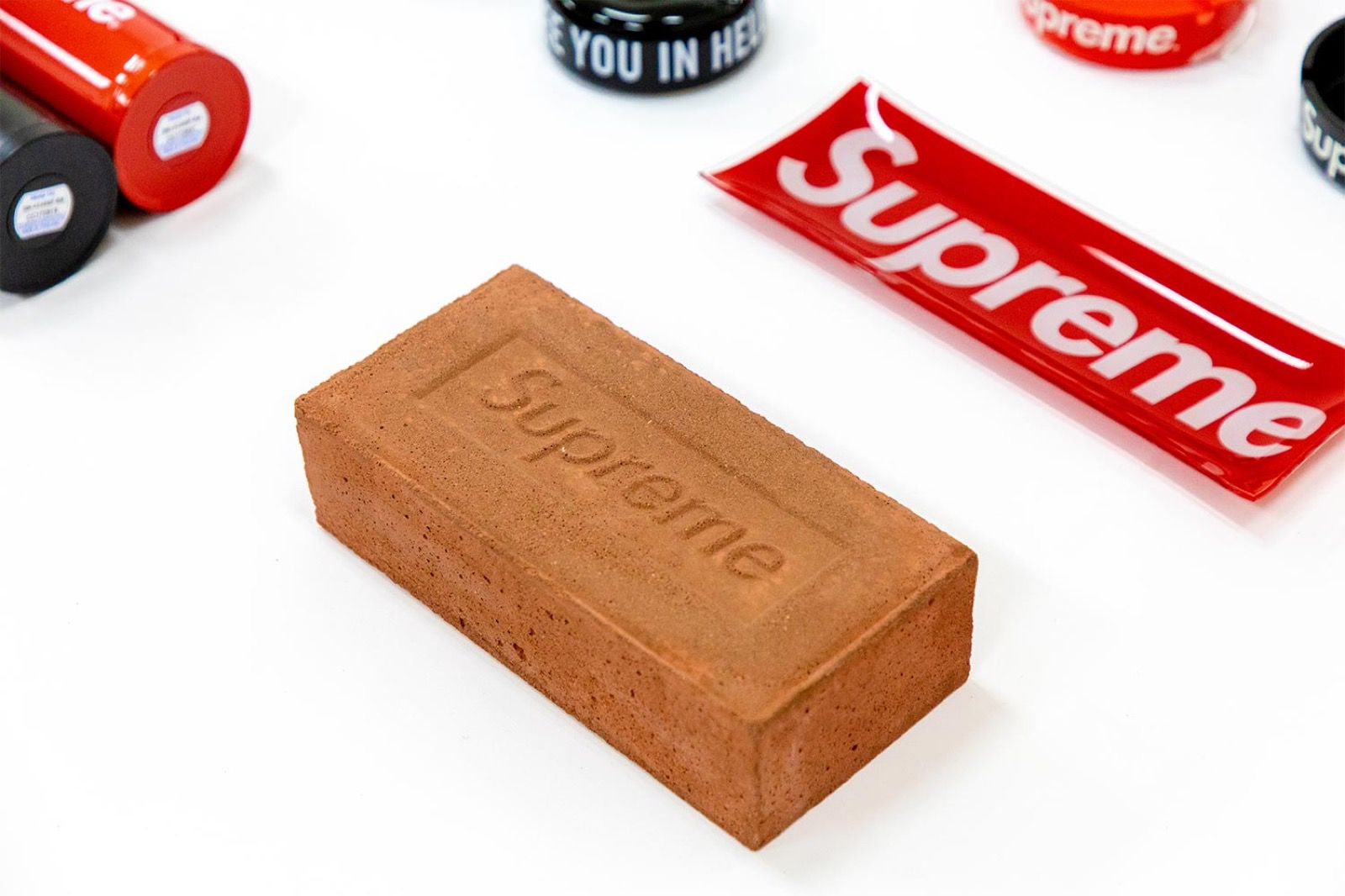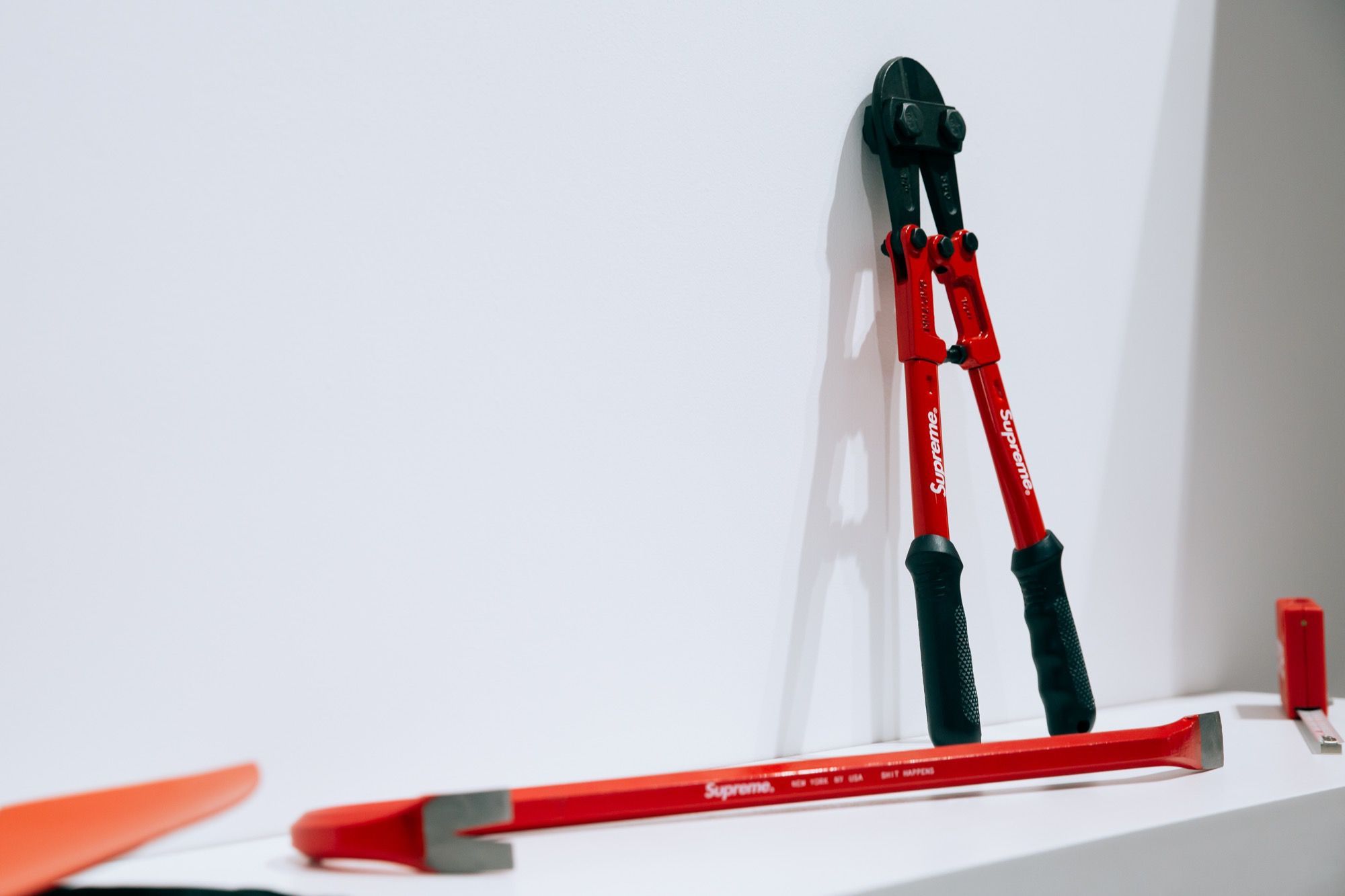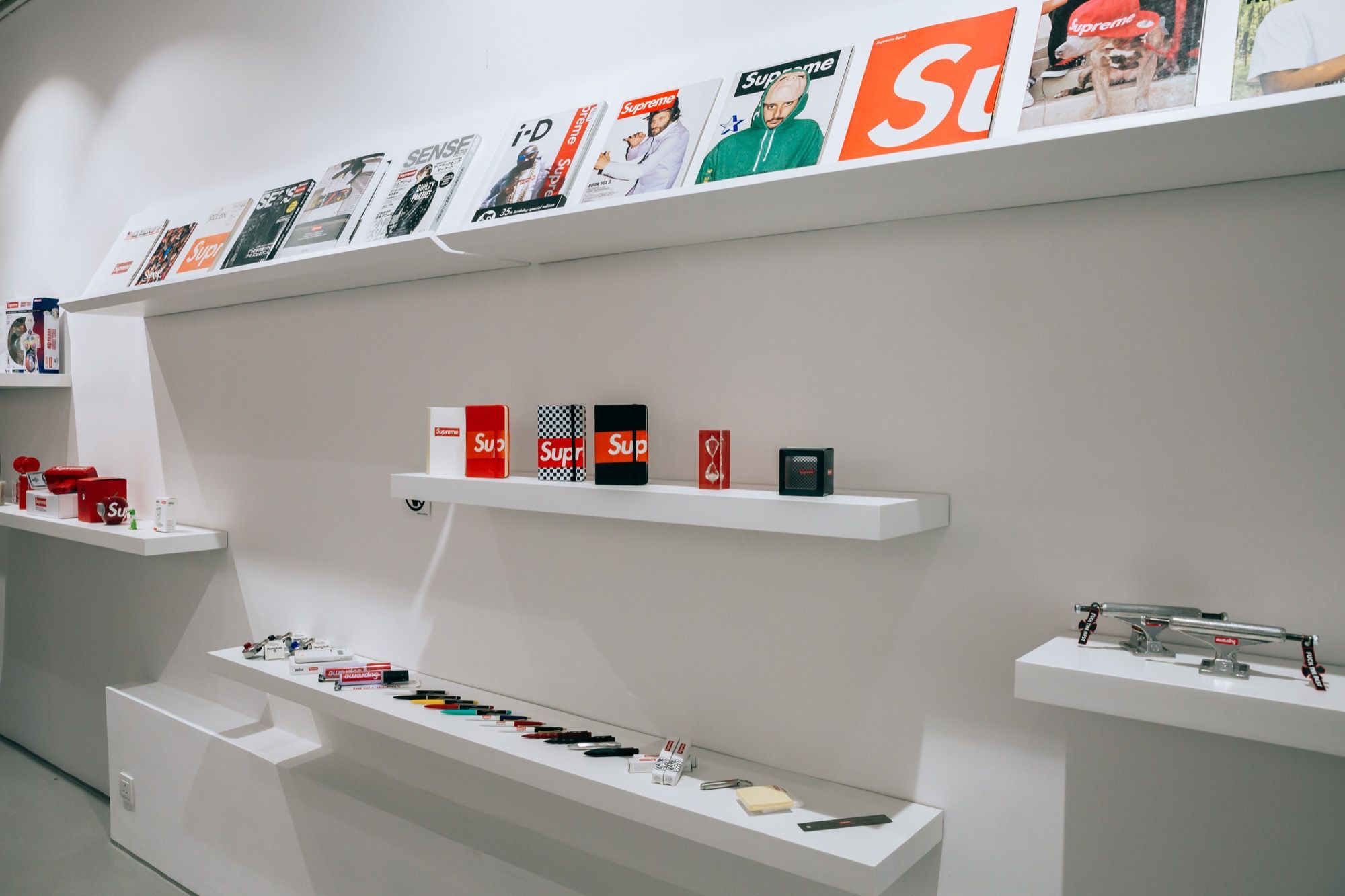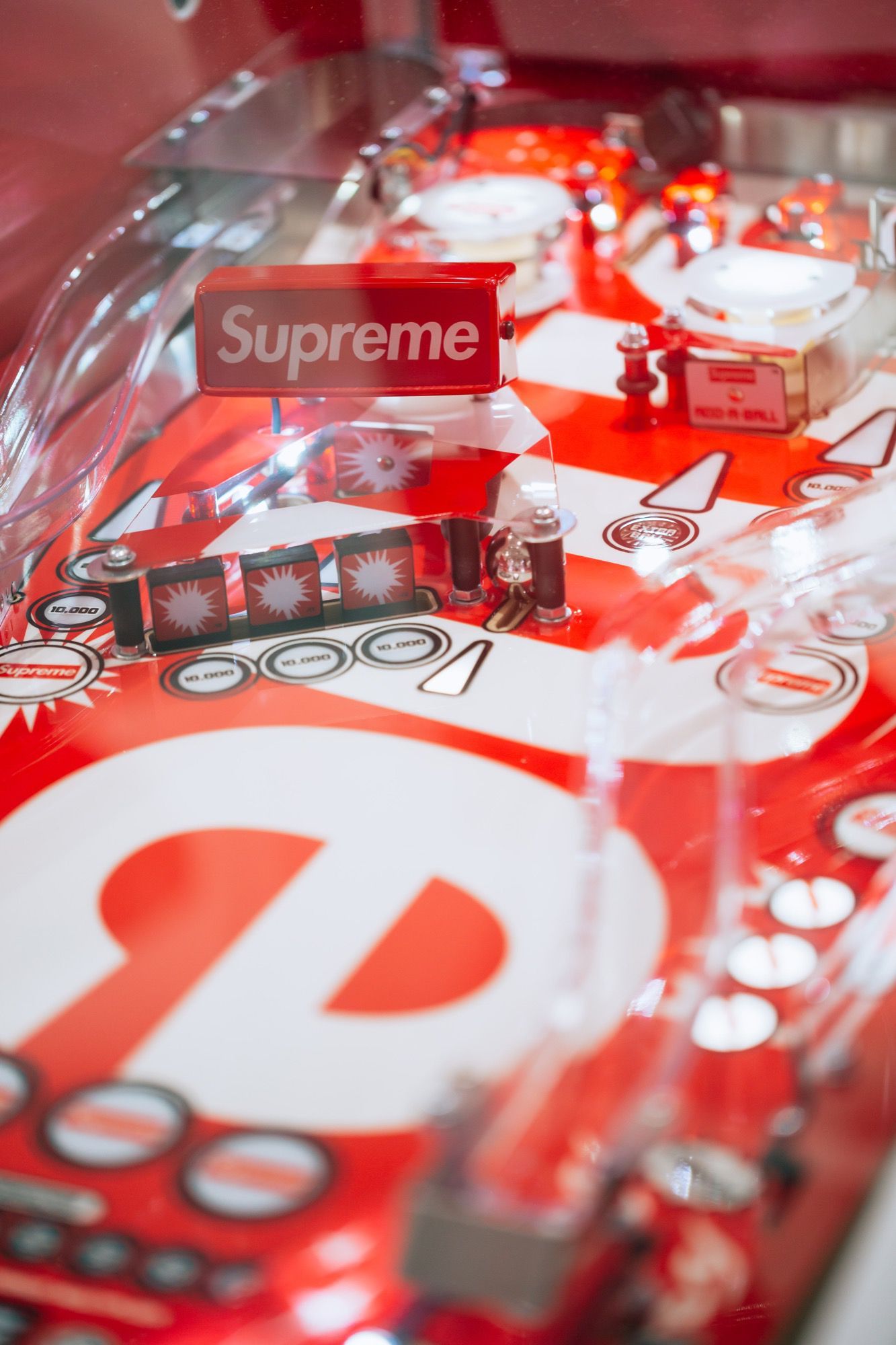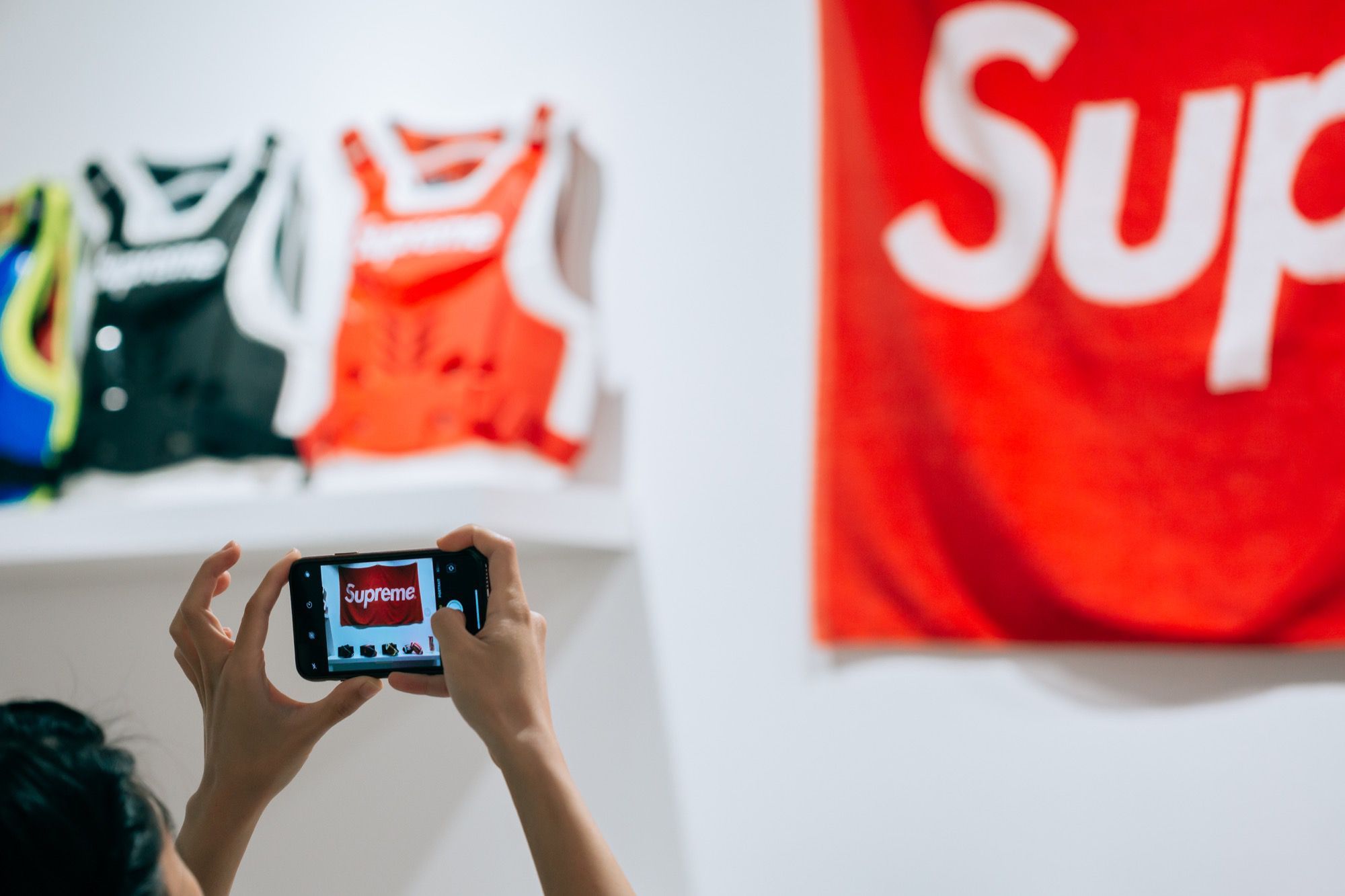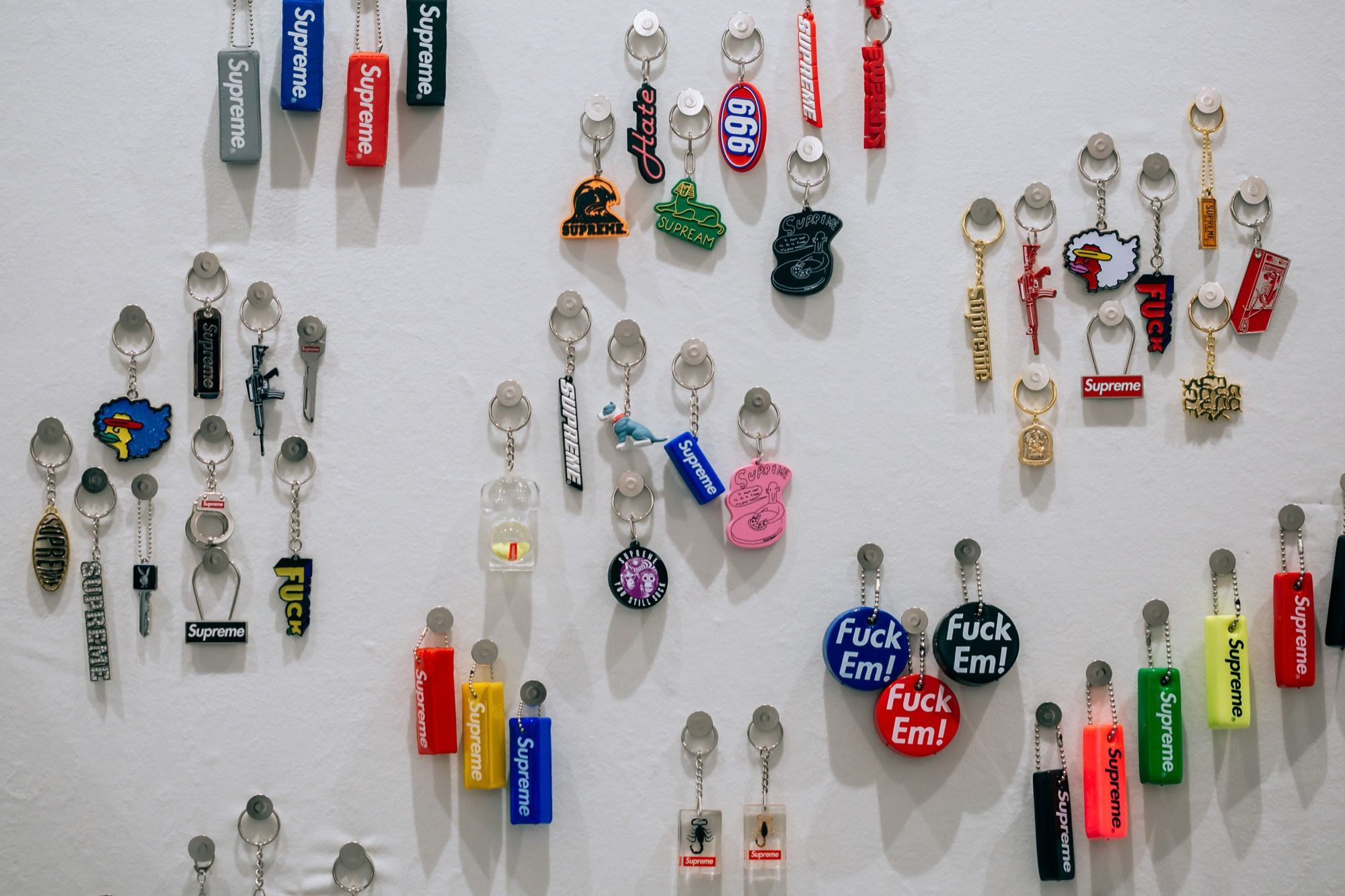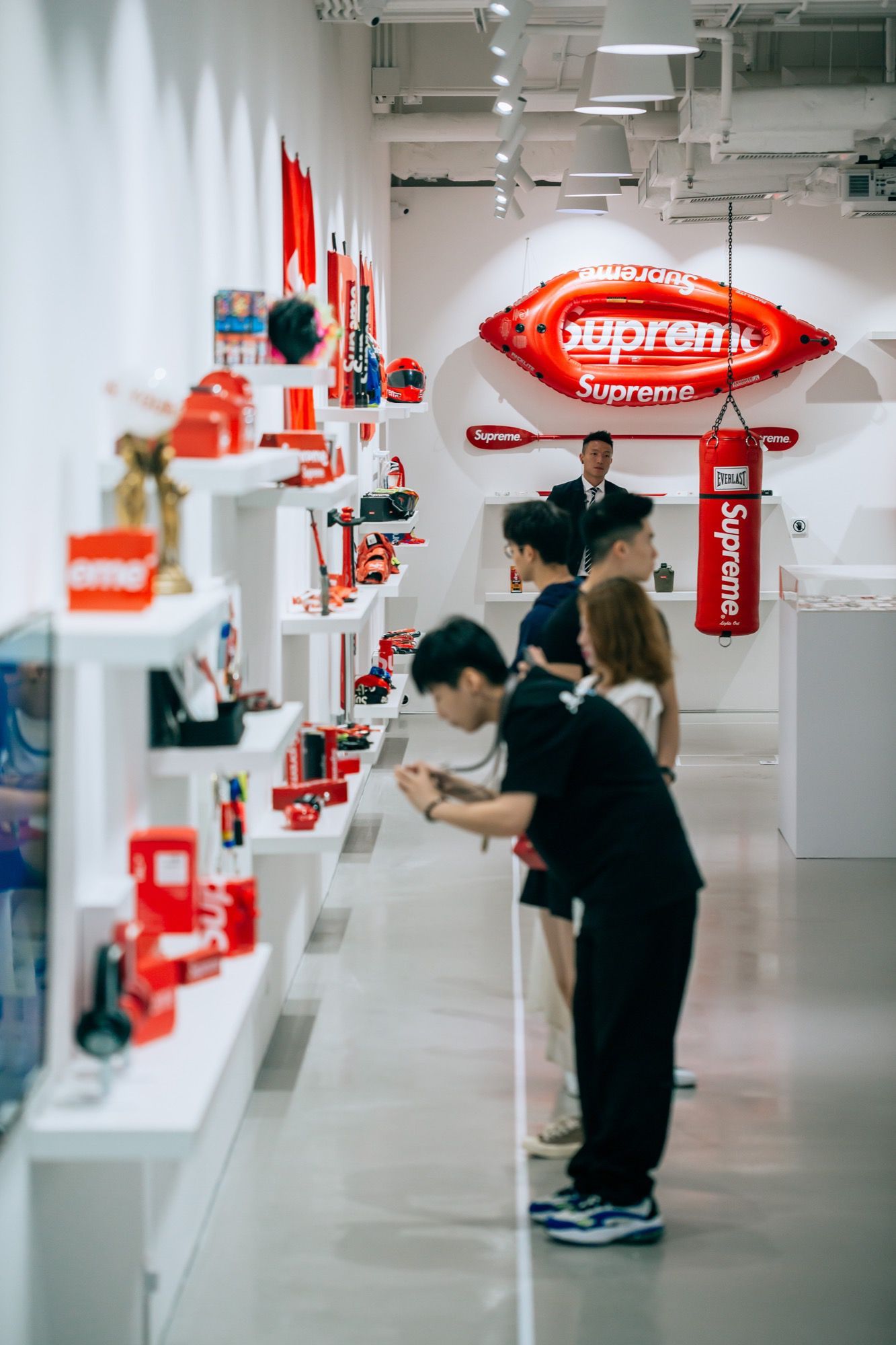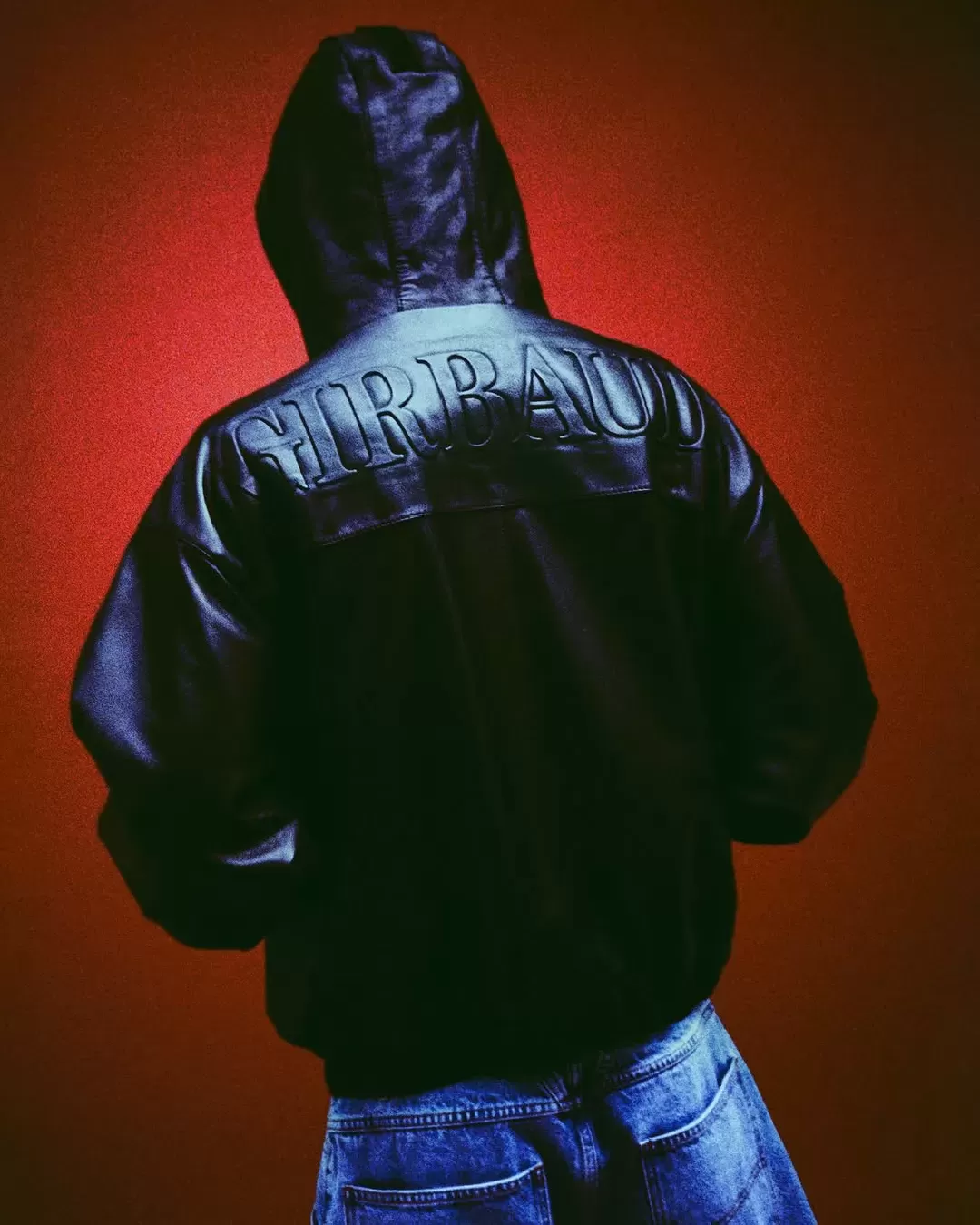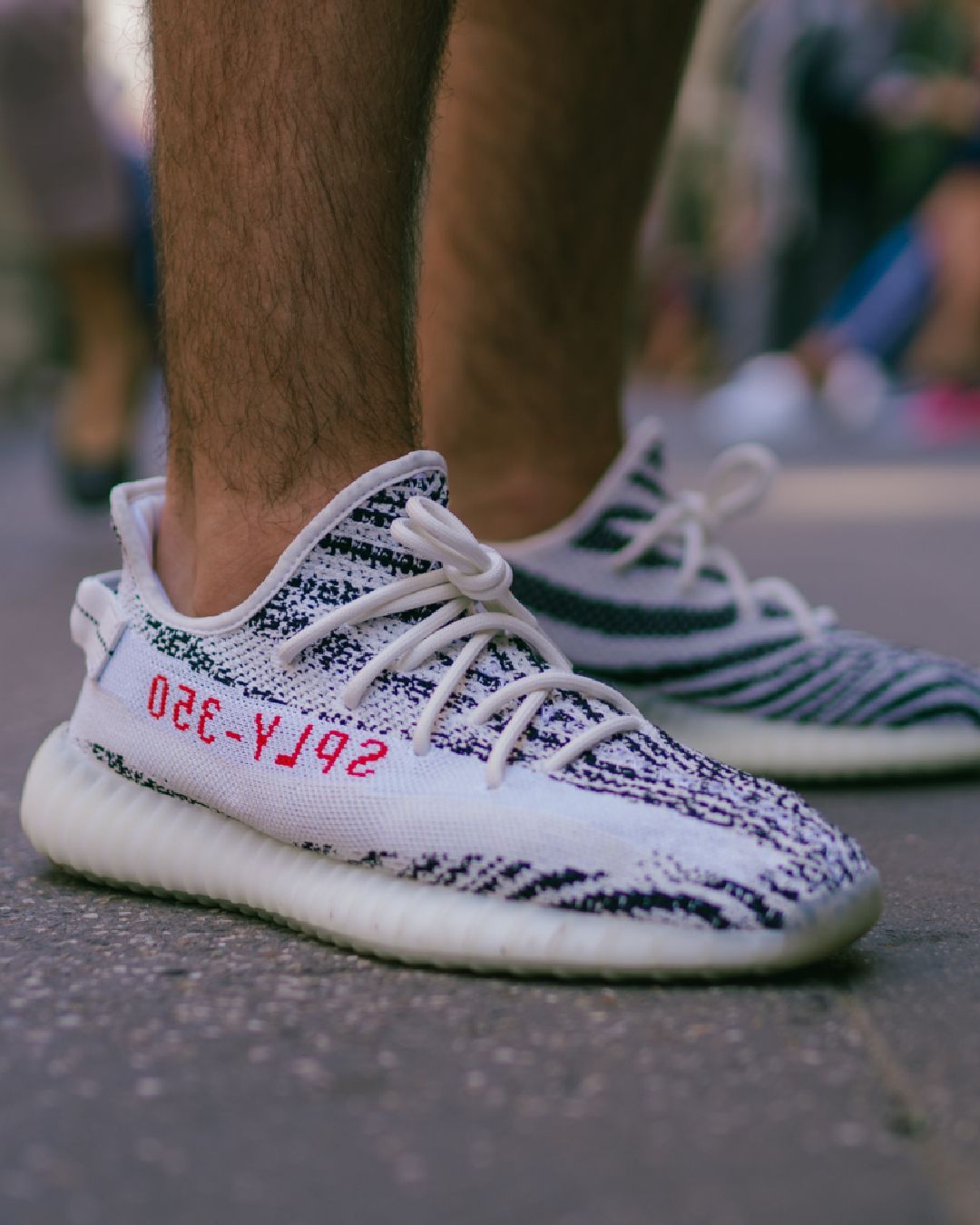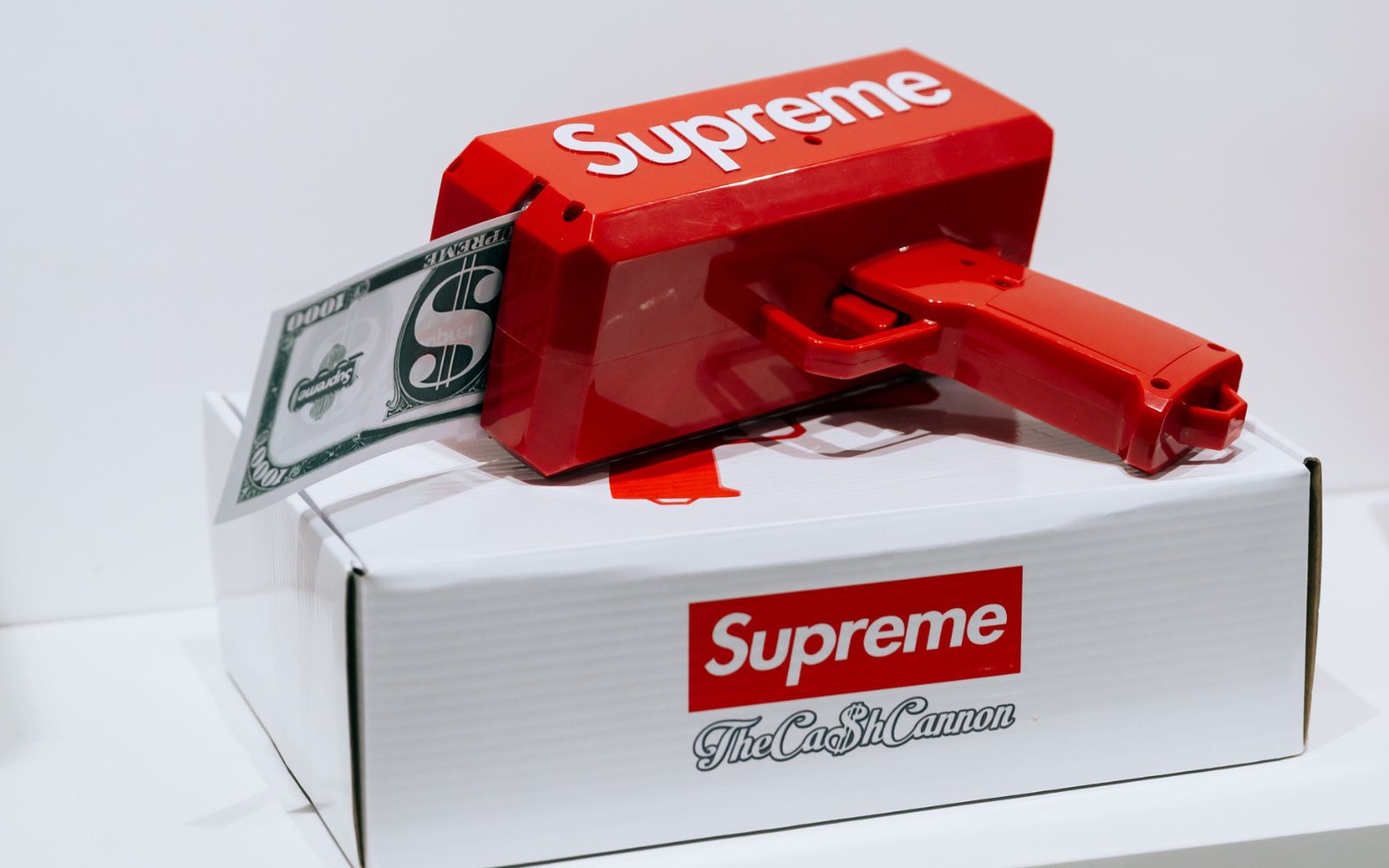
The hidden meaning behind Supreme's accessories We went to the biggest Supreme's auction to understand what's the sense of these crazy items
Try to name a fashion brand that in less than 25 years has produced - apart from tees and apparel - a series of accessories that range from classic stickers, ashtrays, a ladder, a pinball, ceramic statues, a kayak, a vault, a set of knives, an electric guitar, a crowbar, a paperweight, a trumpet, a skirmish gun, a baseball bat, a basketball, a hammer, a fake bible, a fire extinguisher and - trust me - much more.
If only the vibrato sound of "Supreme" comes to mind then you are correct, because there is no other fashion brand that has elevated the production of accessories to pure art as much as the brand founded by James Jebbia in 1994.
Supreme's accessories are magnetic and interesting: they represent the most obscure and avant-guard side of the brand's production. Some consider the accessories part of an ongoing performance art, some see a profound bond with crime and others treat them as sacred relics.
We went to Hong Kong to the HART Hall gallery where the Sotheby's auction house organized The Supreme Vault: 1998 - 2018, an exhibition of the complete collection of over 1300 Supreme accessories produced between 1998 and 2018. The collection went to the online auction that closed on May 28th.
The collection at the auction belongs to Yukio Takahashi, manager of the resell site Bazamn.
Last February, Takahashi's items had been exhibited in Los Angeles along with Ryan Fuller's full collection of 243 Supreme skateboards, later sold at Sotheby's auction for $800,000.
Among the incredible variety of shapes, sizes and usefulness of the items, the only constant factor is the presence of the Supreme boxlogo: printed, sewn or even just hinted with an S in the brand's color palette.
The production of accessories was used by James Jebbia and Supreme to experiment with the most daring and creative collaborations: from the New York City MTA to Everlast, via Tivoli Audio, the New York Post and Spalding. Of course, the craziness of the items helped the brand to conquer the Instagram feeds and the home pages of online magazines causing a continuous "wow!" that has redefined the boundaries of the acceptable drop after drop. It’s become a bit of a running joke in the streetwear community, and it’s a great way for Supreme to mock (and validate) haters’ claims that people will buy anything with a Box Logo on it.
However, Supreme's accessories define the mysticism of the brand in an original and complex way, so no object - even the craziest - appears out of place, but instead adds charm and a layer of complexity to Supreme.
The running joke theory
It's up to debate whether Supreme accessories have an aesthetic or symbolic value, but they certainly play with the Western and post-capitalist obsession with objects.
Collecting is a typical behaviour of males who refuse to enter adulthood: Sigmund Freud has repeatedly analyzed the meaning of this behavior as a symptom, defining it in different contexts as a form of fetishism that shelters anxiety; an attempt to reproduce the erotic pleasures of childhood through the creation of a small world on which to exercise total mastery and management; a ritual that aims at counteracting aggressive and sexual impulses. It is no coincidence that the Hypebeast community has very similar traits to comic collectors and gamers, both worlds dominated by men in their early 20s.
It would, however, be simplistic to treat Supreme accessories as the Hypebeast objects of desire: the items are also symbols of avant-garde nature of Supreme, like an on-going performance act, where everyone plays a role. The production of accessories - started in 1998 - has increased in quantity and imagination since 2010, coinciding with the change of fanbase and consumers of the brand from a niche of enthusiasts towards a wider and younger community. In this sense, Supreme accessories are a good map of Supreme's parable and of the complex relationship - challenging or almost teasing - that the brand has with its fan base. Although Jebbia has repeatedly criticized the camps outside the Supreme stores, some of the accessories - like the portable chair, the wireless speakers, the water bottle, the torch, the metal tapper ware - seem to be dedicated to the hypebeasts or fuccbois.
The Crime theory
There is a strange but fascinating theory regarding Supreme's accessories proposed by David Shapiro, author of the novel Supremacist. In his opinion “what unites Supreme’s accessories is that most of them have some sort of illicit/underworld connotation having to do with violence or drugs. But they appear, for the most part, ostensibly innocent – only when viewed together you get the sense that they’re suggesting something illicit.” He proceeds to reel off a list of seemingly random Supreme accessories that suddenly begin to make a lot of sense when looked at through a criminalistic lens, like the Supreme x Mizuno children’s baseball bat from SS14. In Shapiro’s words: “it would be useful in an armed robbery – a small bat would probably get the job done just as well as a big bat, but it’s easier to conceal and carry. And also carries a lower legal penalty than using a gun.”
The arty theory
“A brick? Supreme has made a f***ing brick with a Box Logo on it!”
Equal reactions of amusement and bemusement swept through forums, Facebook groups and Reddit threads when Supreme unveiled their Fall/Winter 2016 preview, which included a Box Logo-branded brick in its selection of accessories. With the brick release, Supreme proved the point that they could literally sell anything with a boxlogo on it. From the point of view of those who bought the Supreme brick, it is an act of faith towards the brand, those who buy it do it only for the symbolic value of that object or because they understand the joke.
It was a bold move, as Piero Manzoni did with his shit in a can, to prove that every act of an artist is art. The Supreme brick is a piece that recalls the ready-made art movement, in this sense, Jebbia is in line with the Duchampian vision of the eternal balance between the teasing the viewer (and the art system) and the claim of the artist who elevates a common object to work simply by signing its elevation.
Supreme is not the usual streetwear brand and its products trigger emotions in the public for the complexity of the aesthetic, the strategy and narratives behind every single item.












































